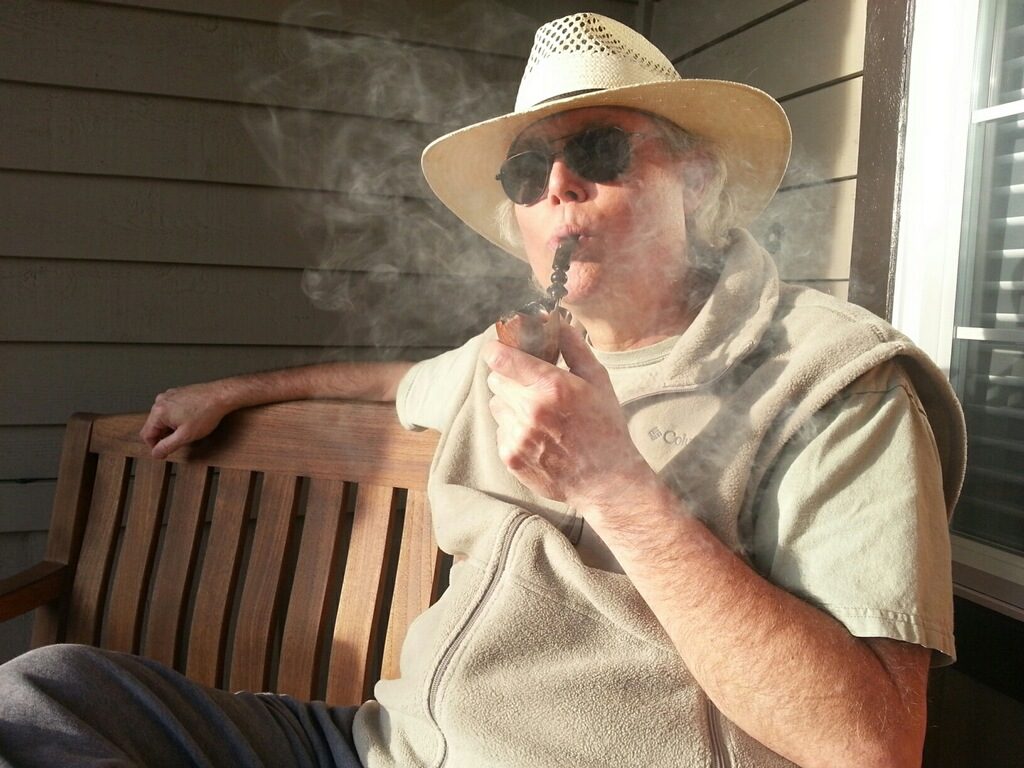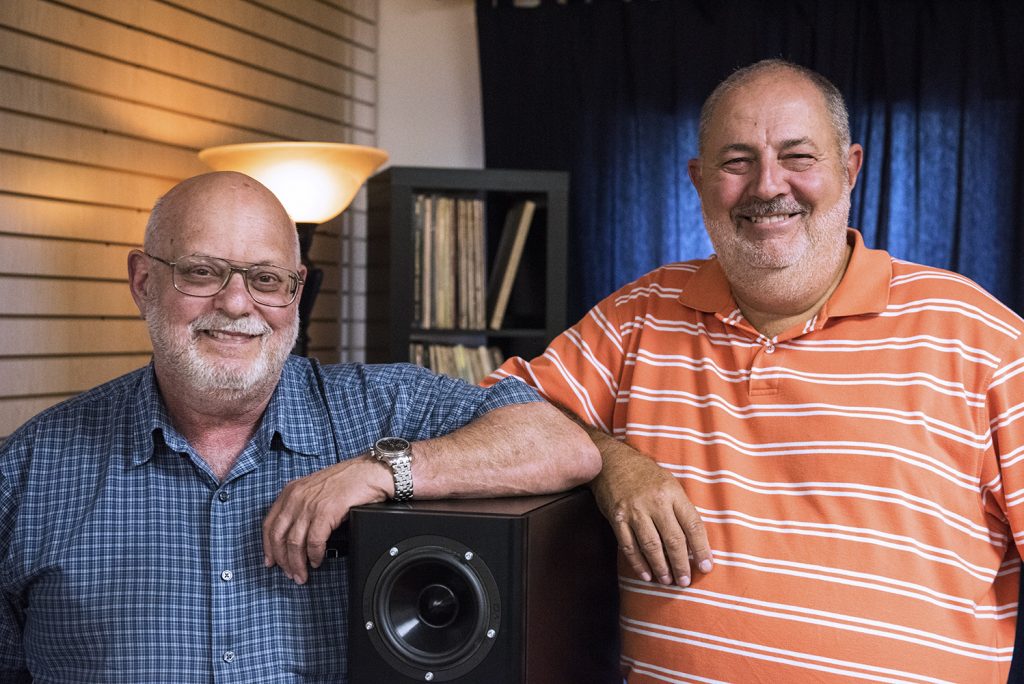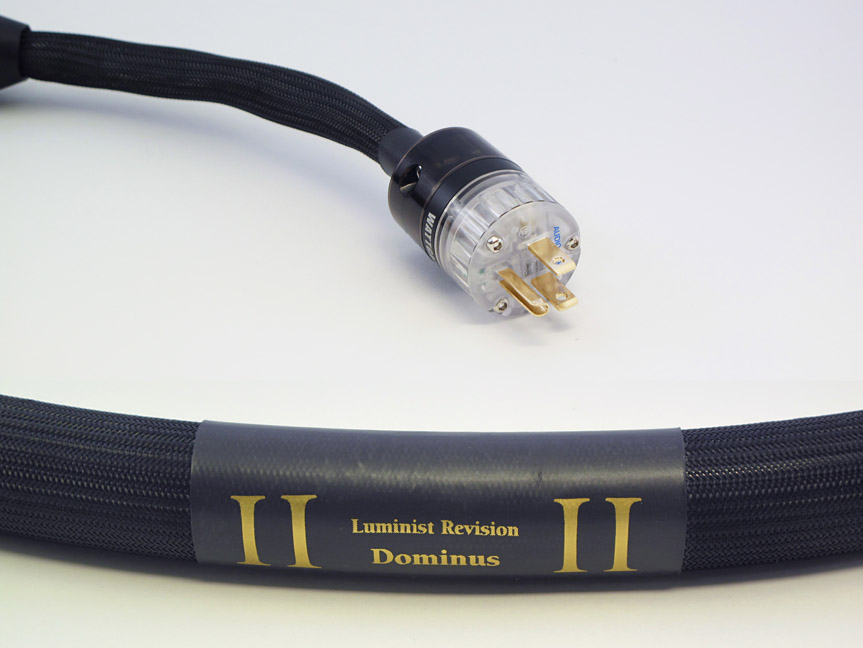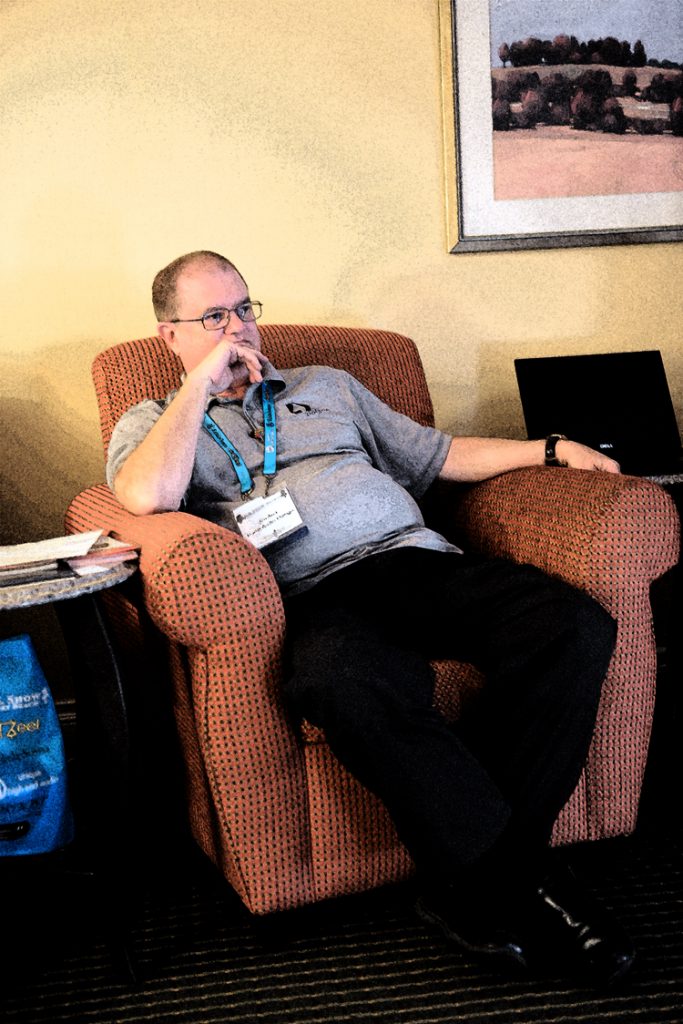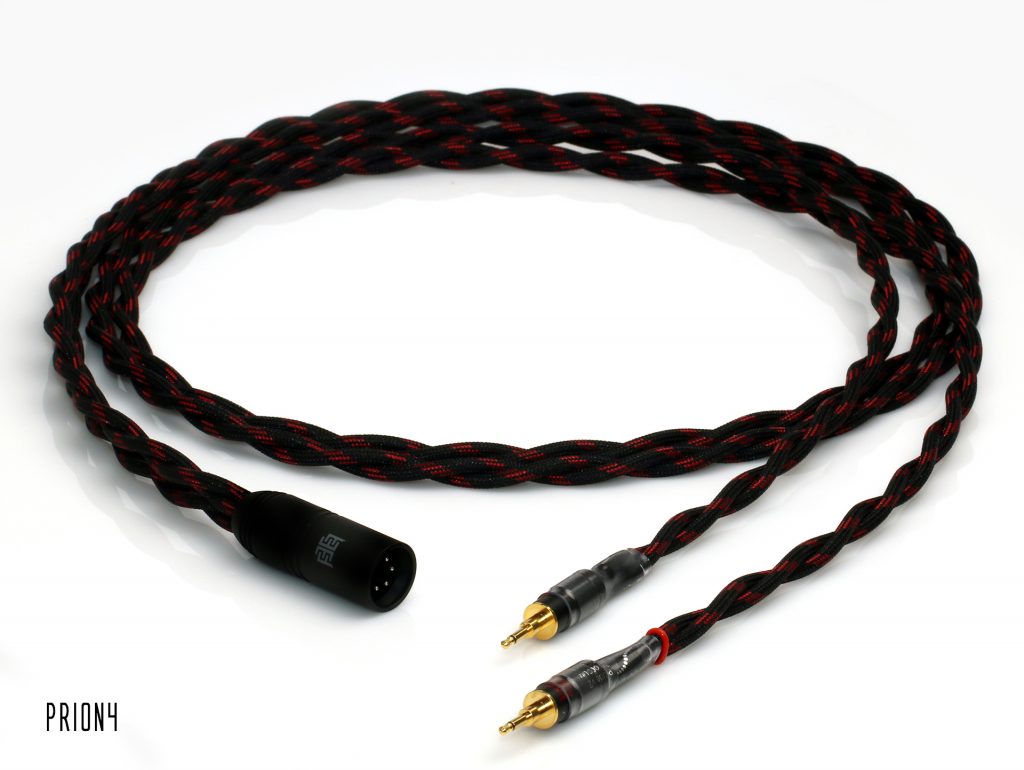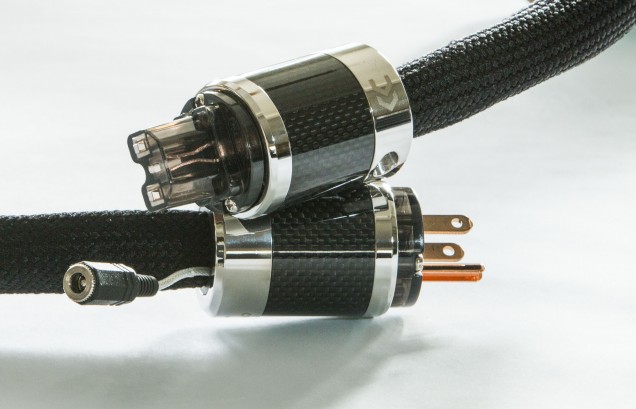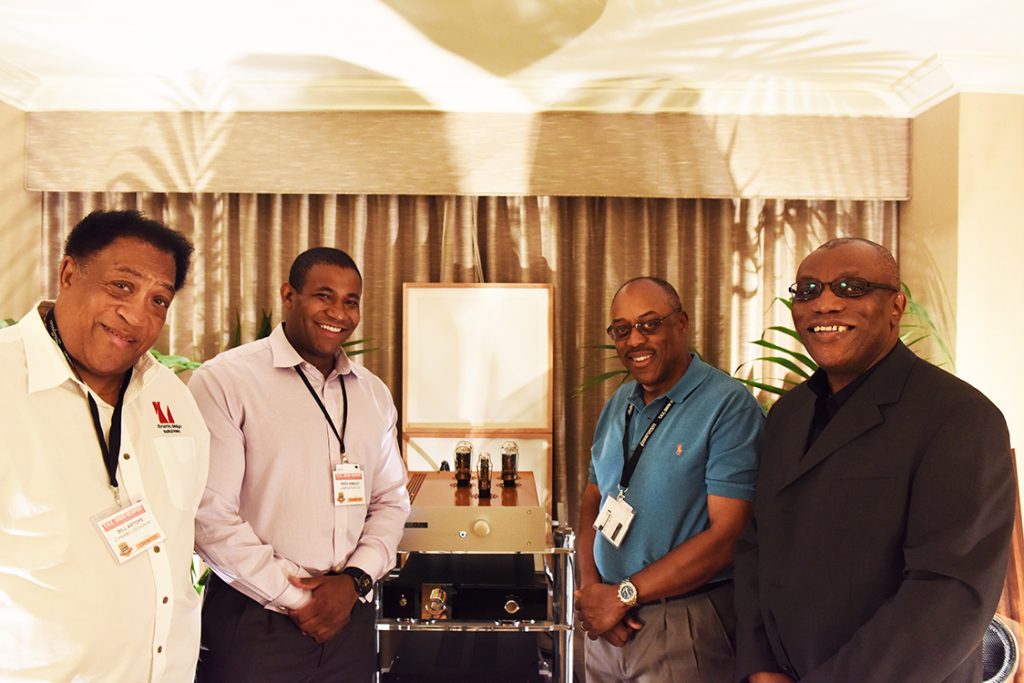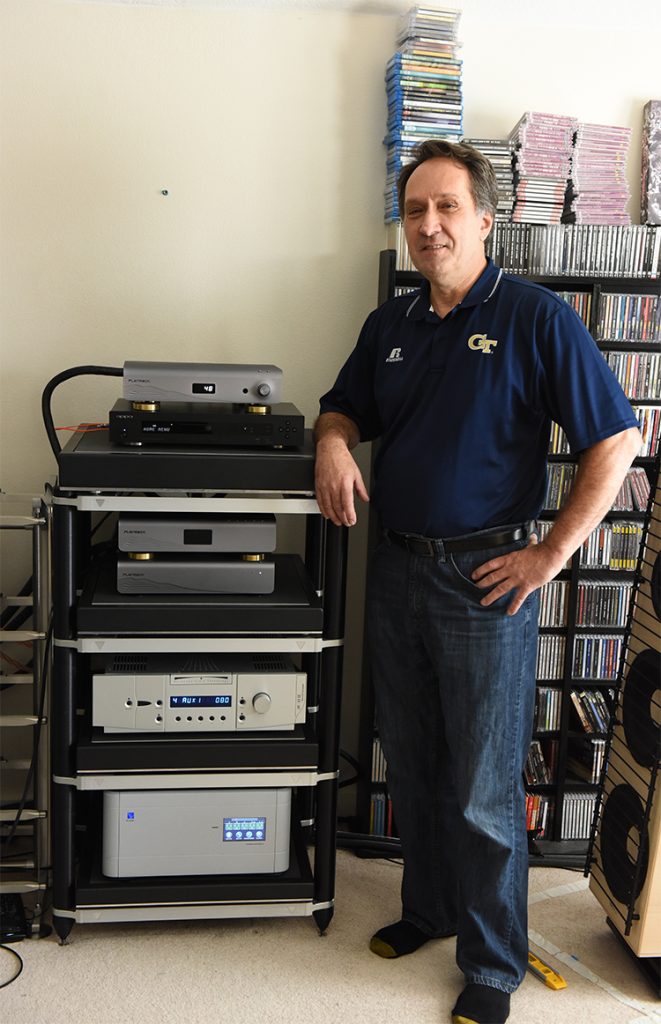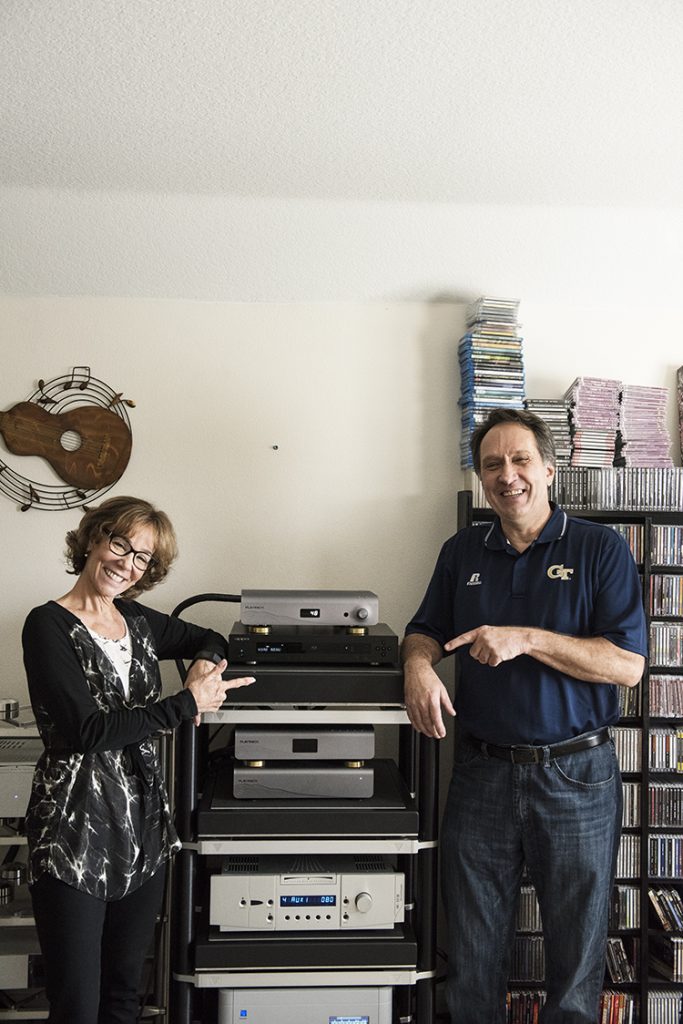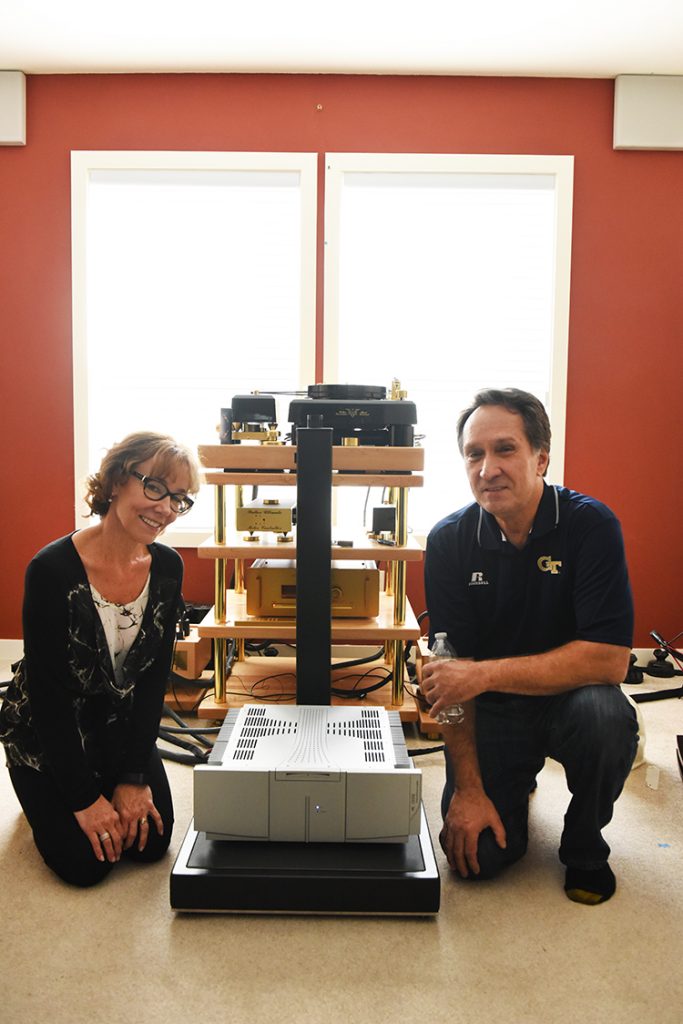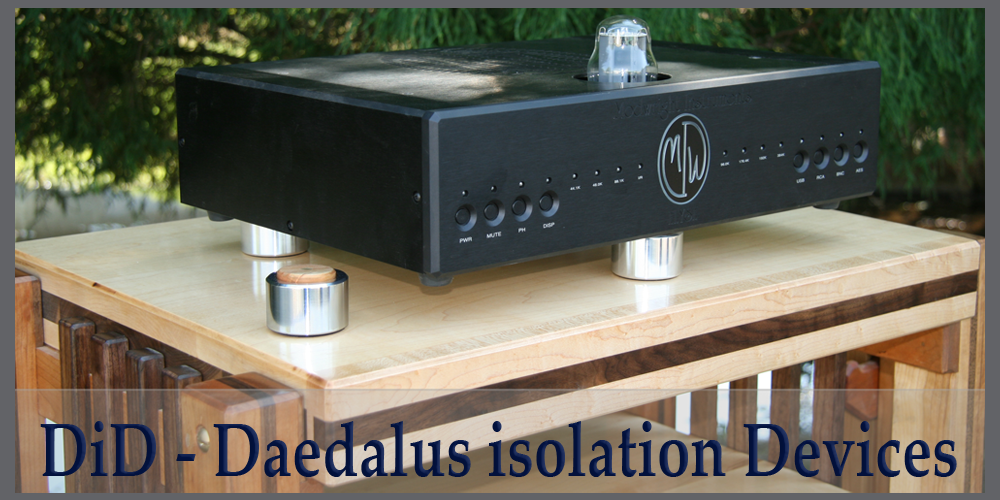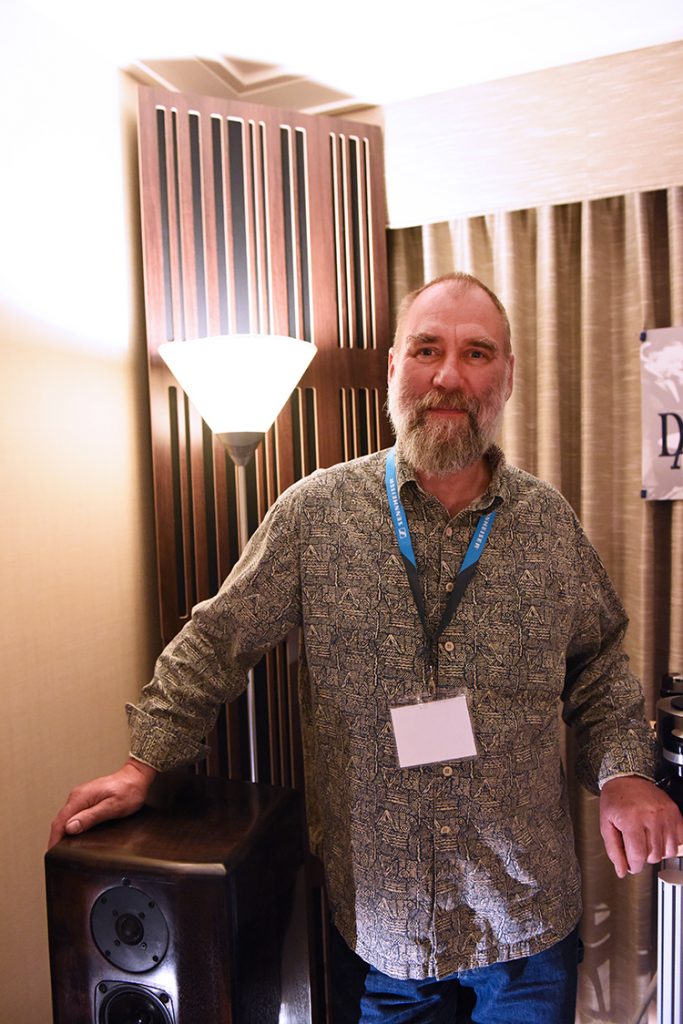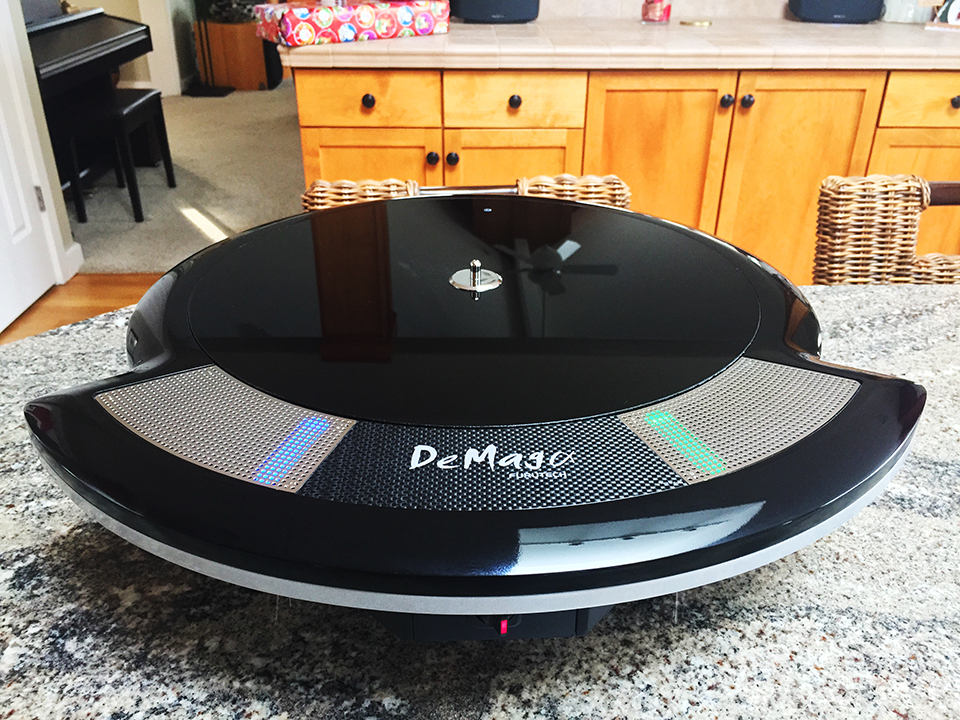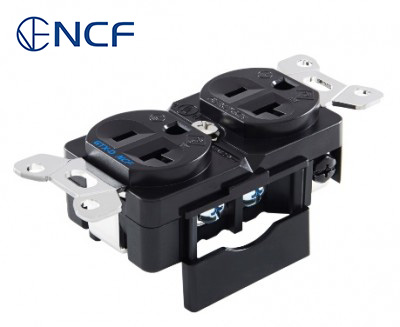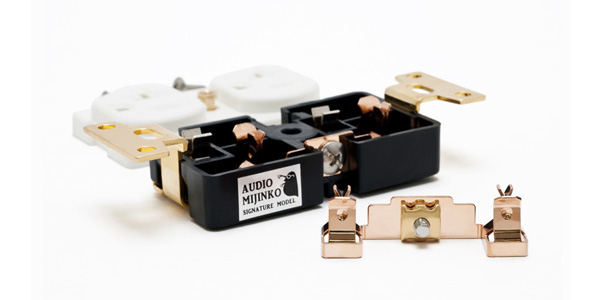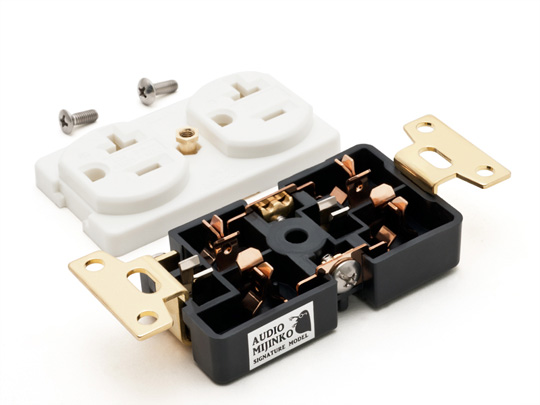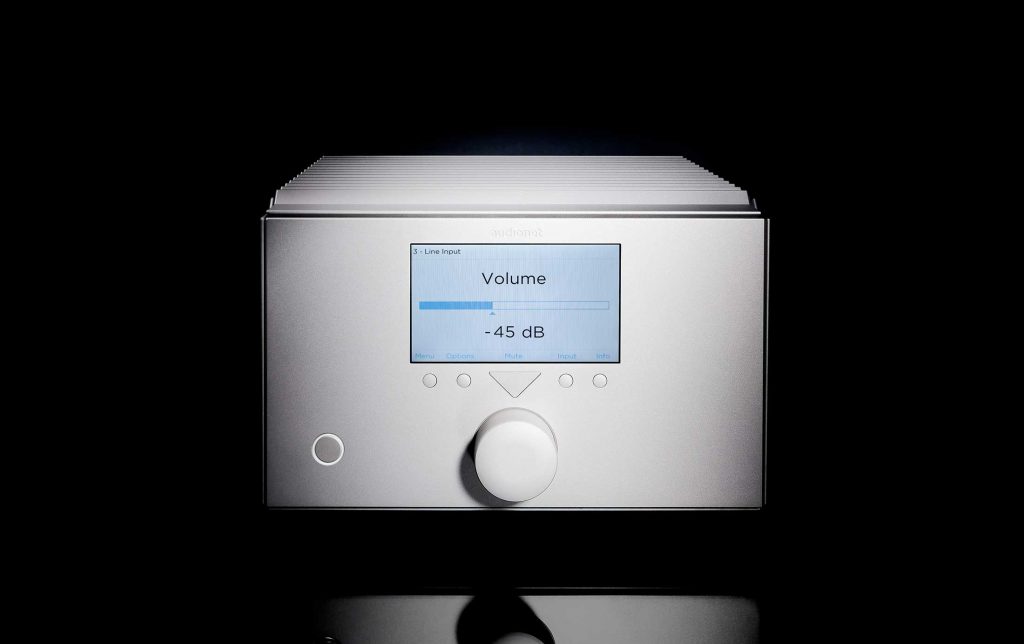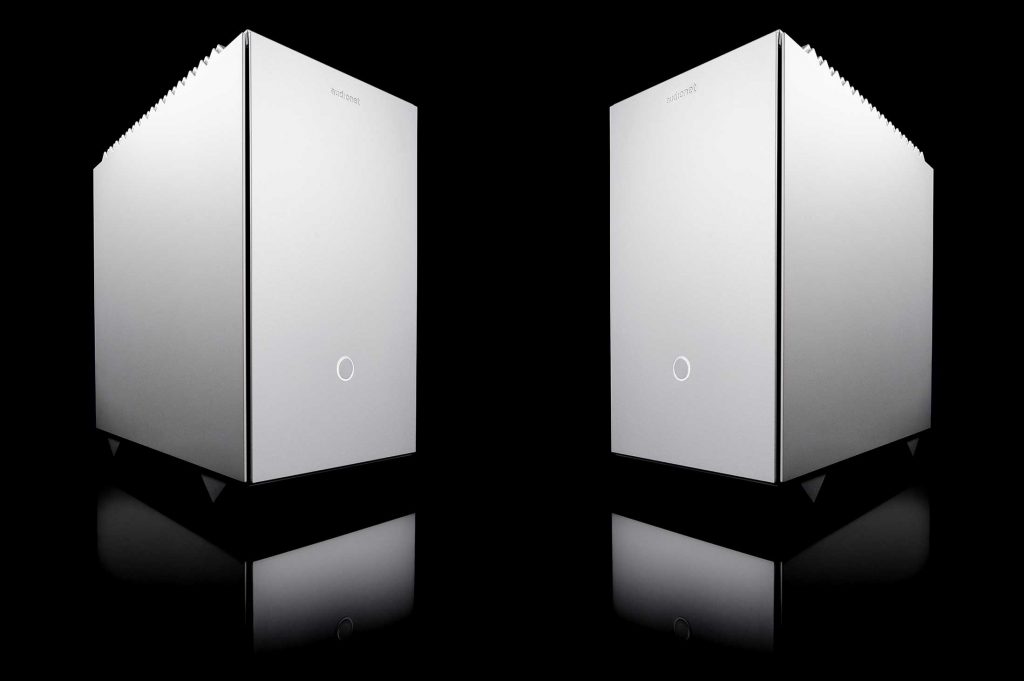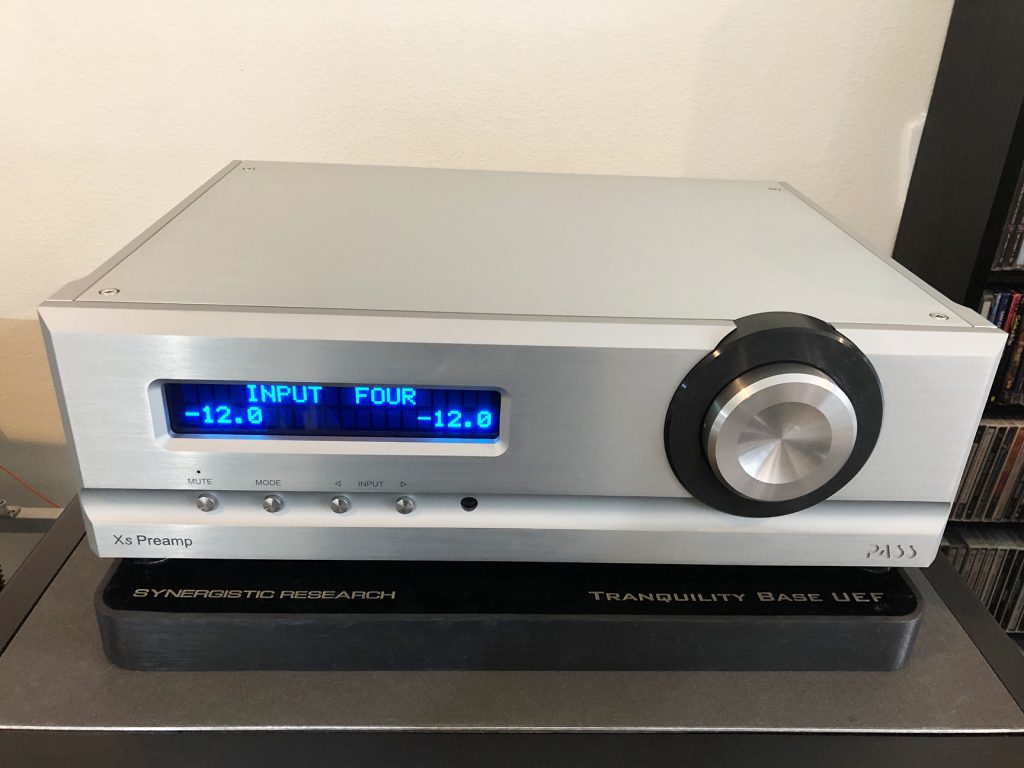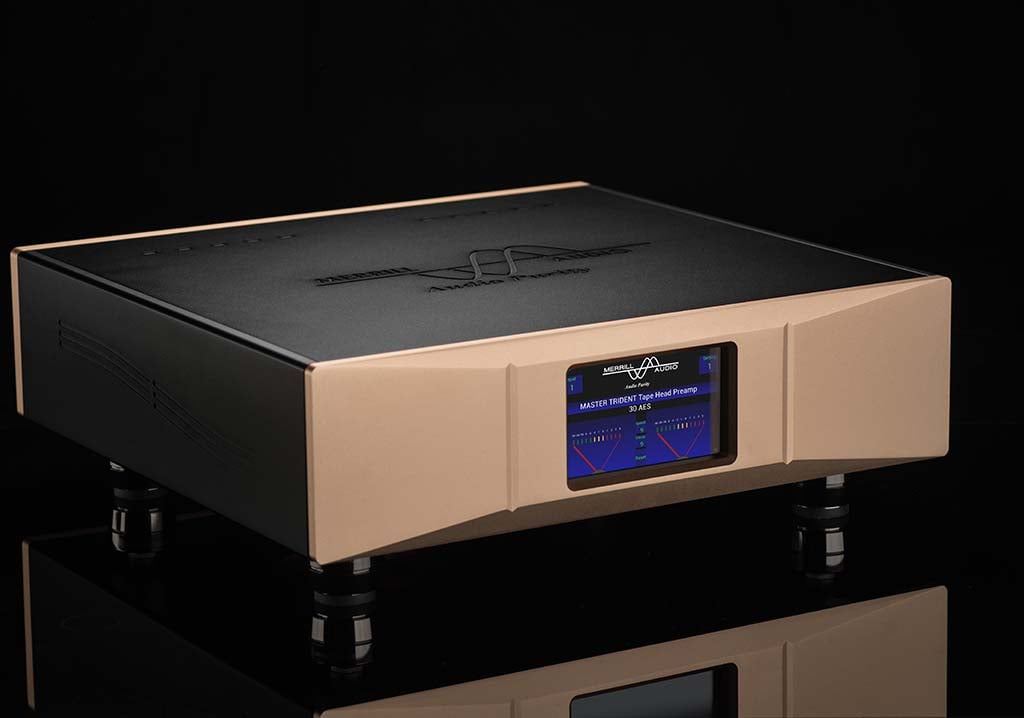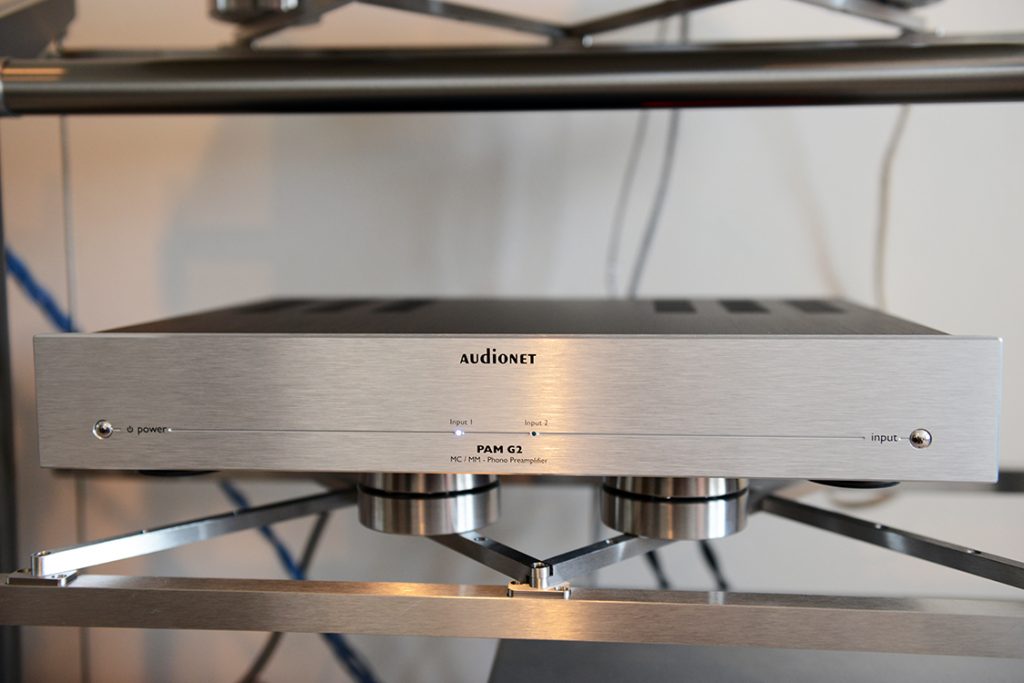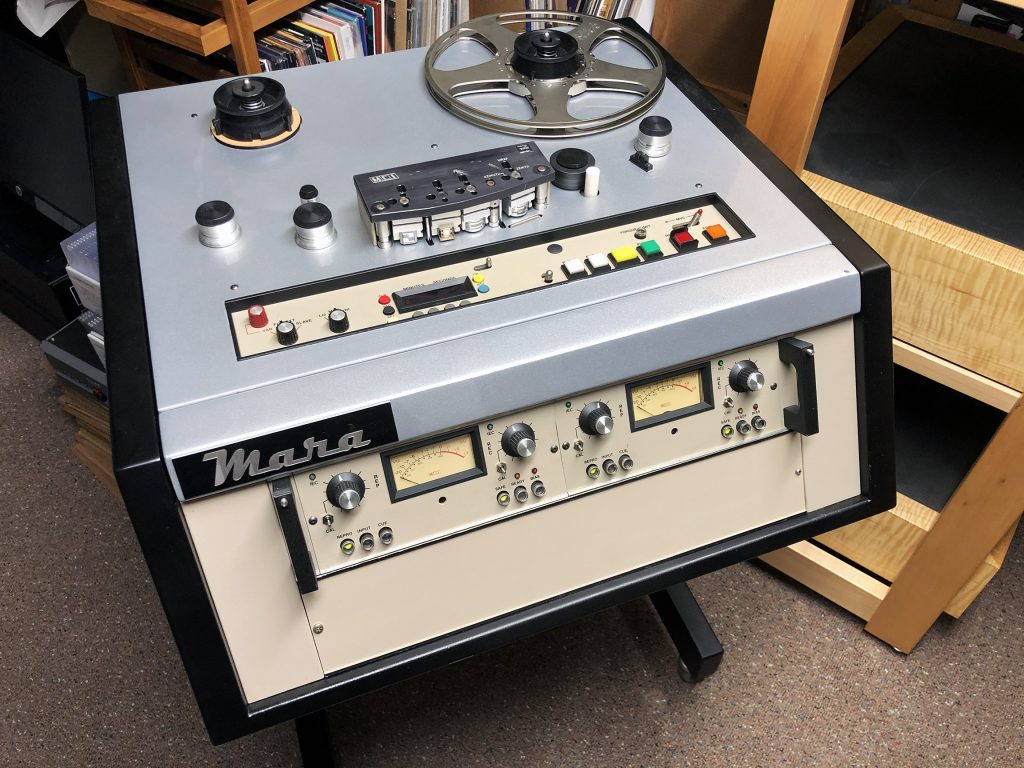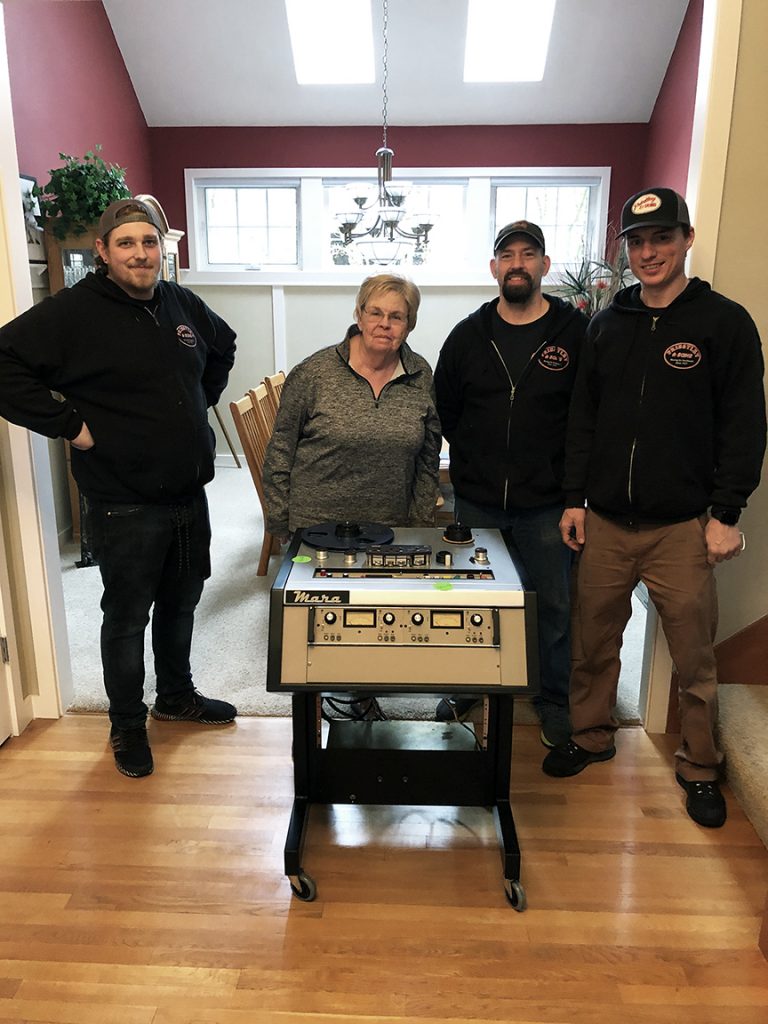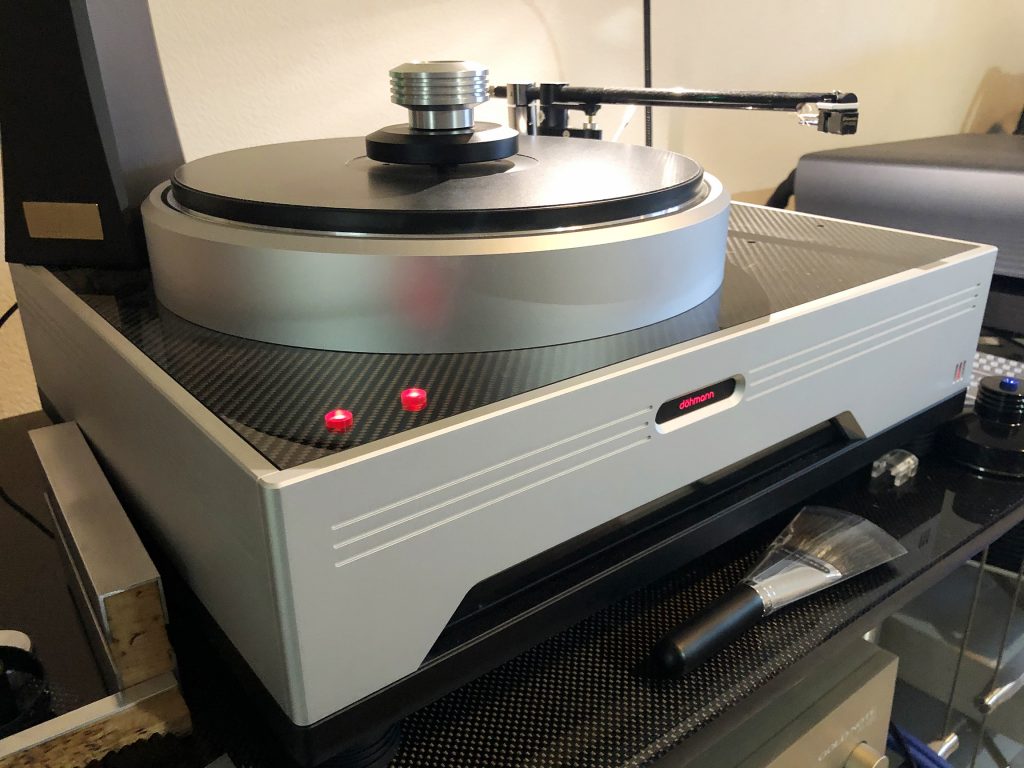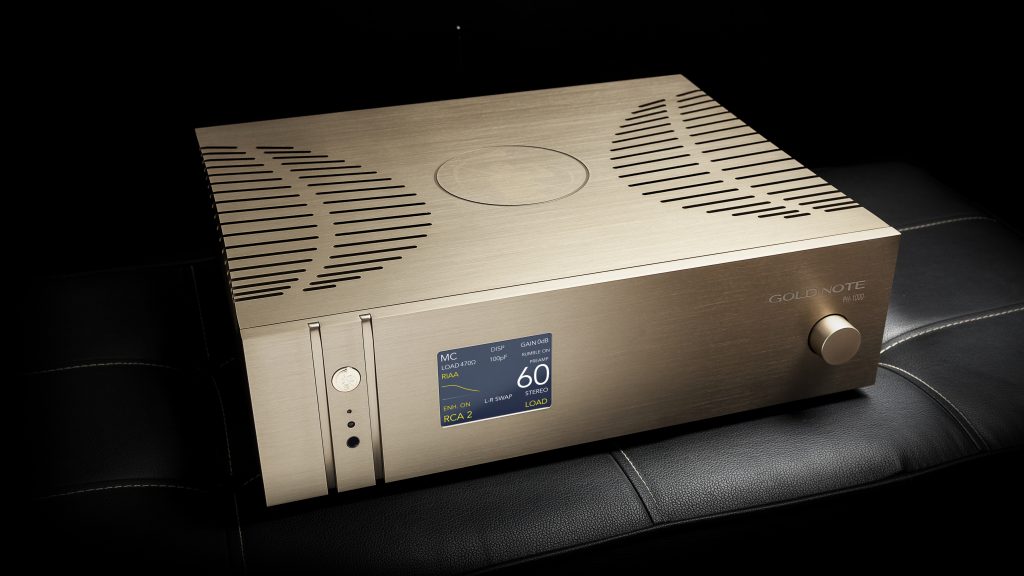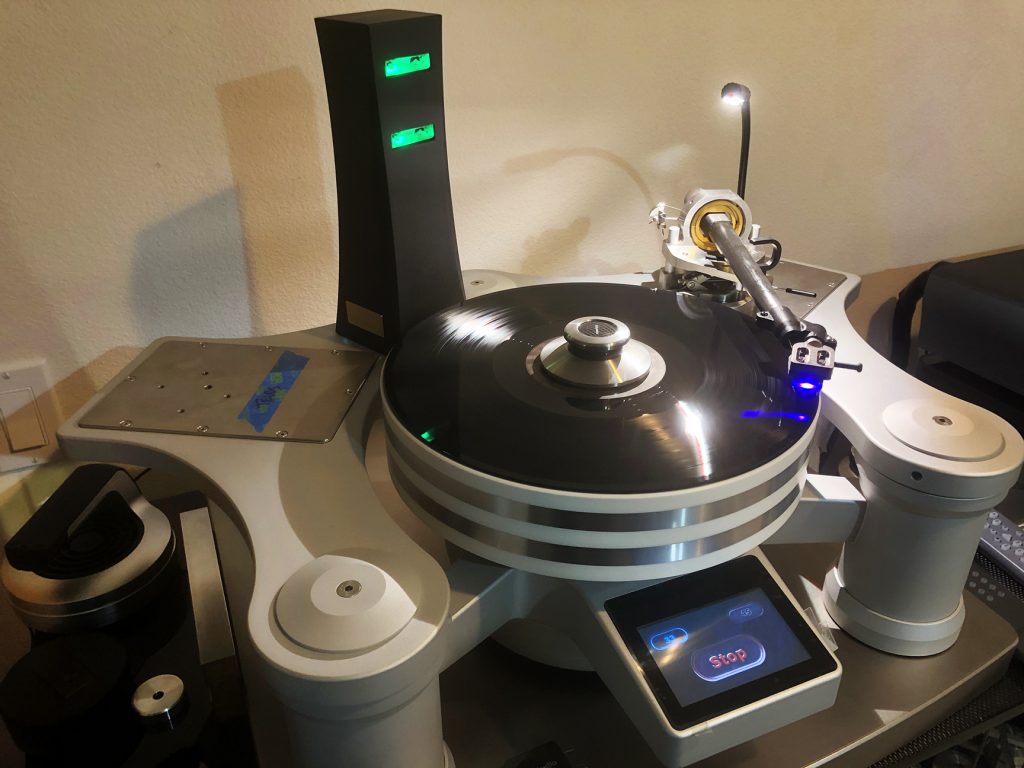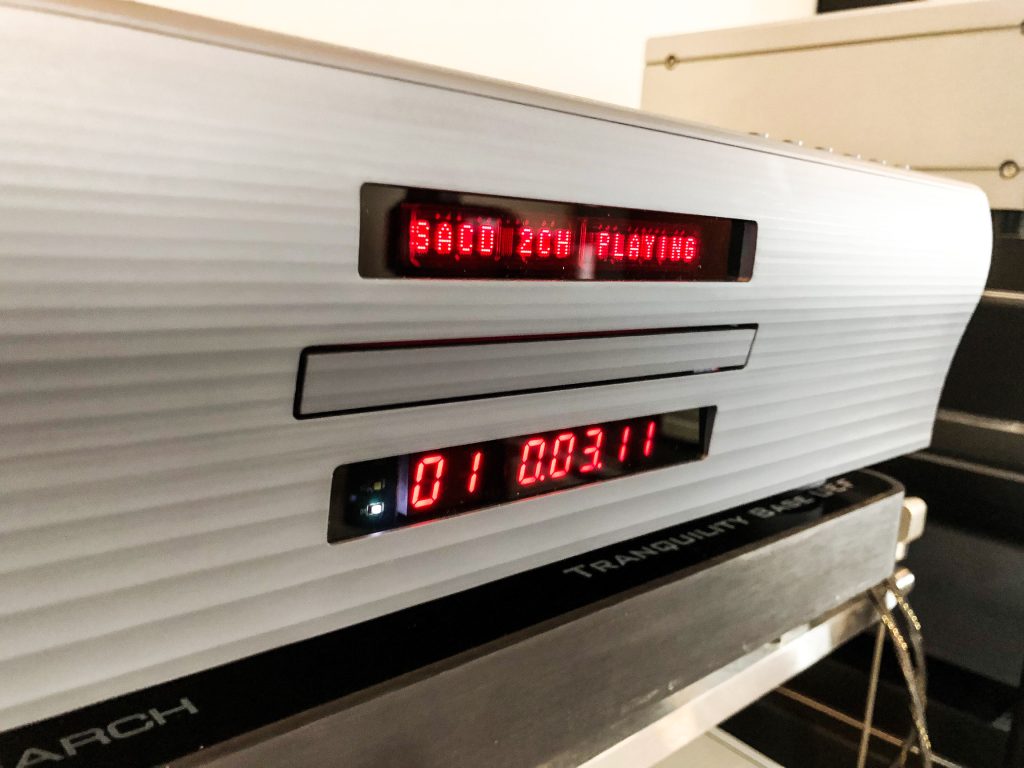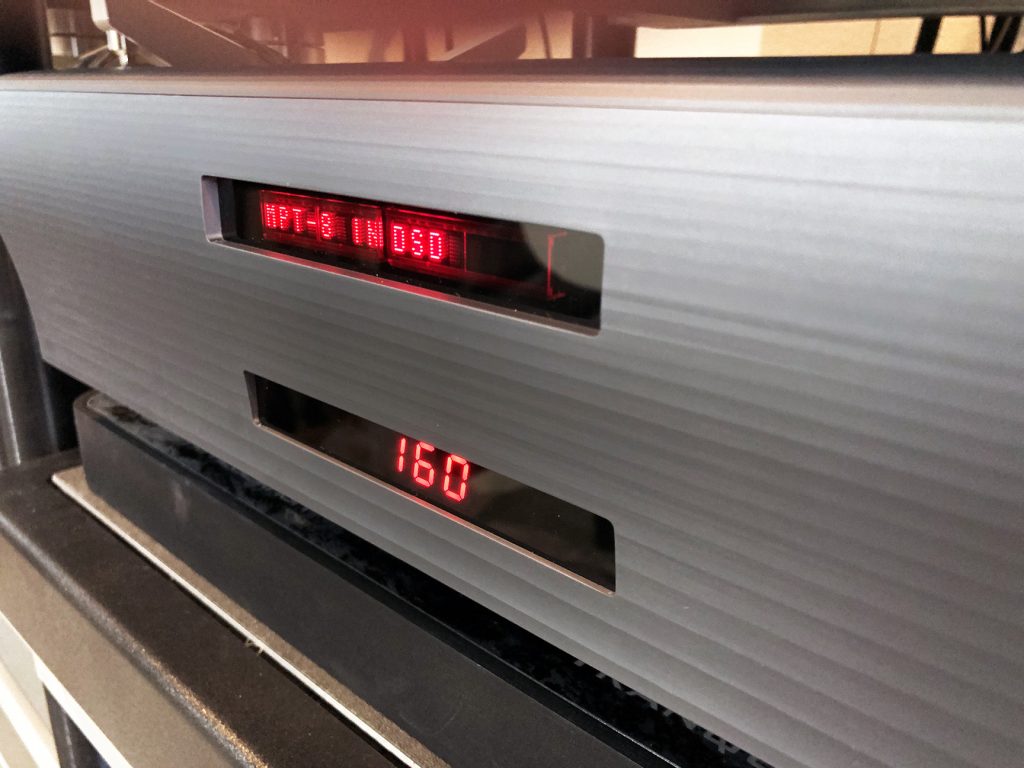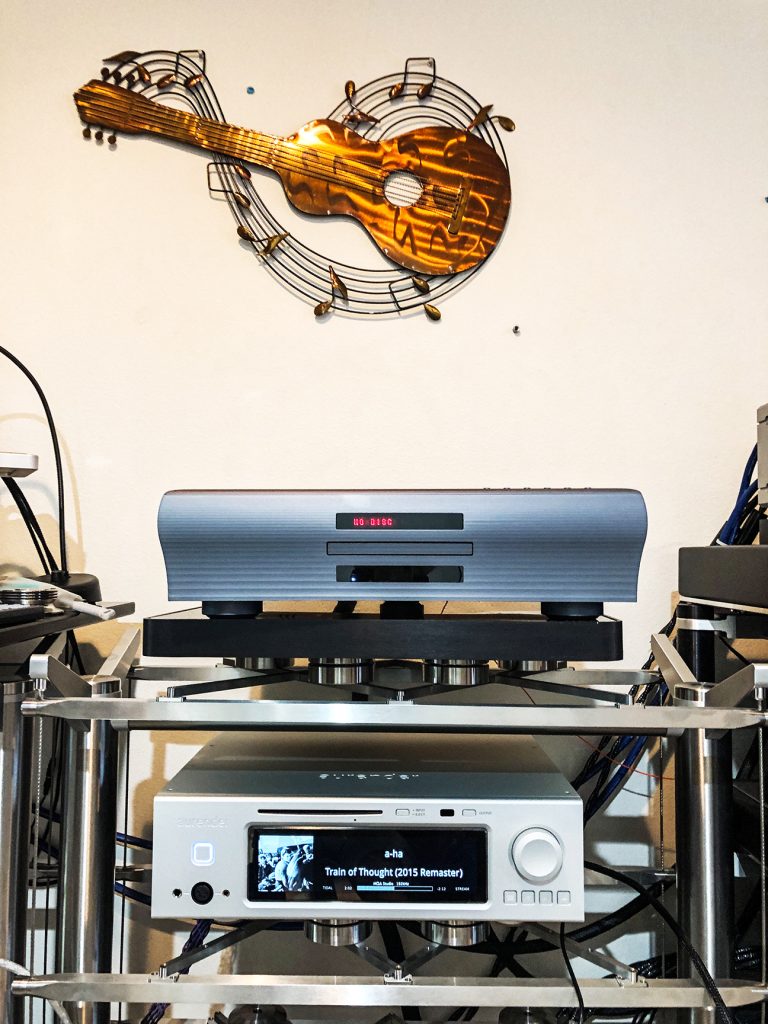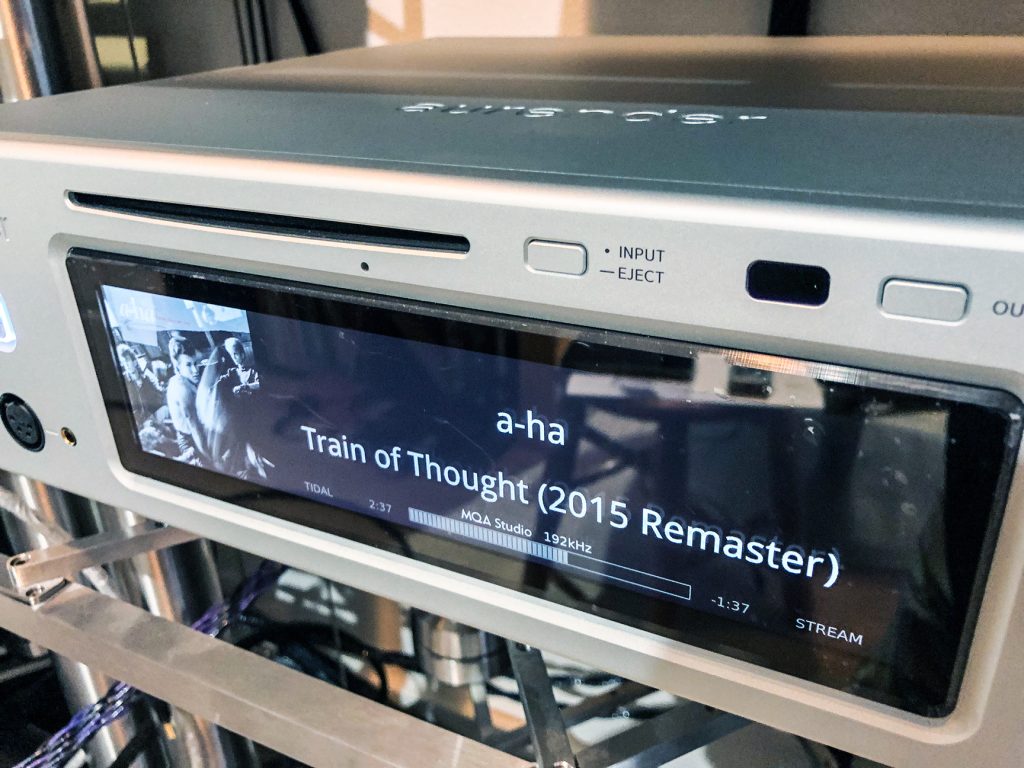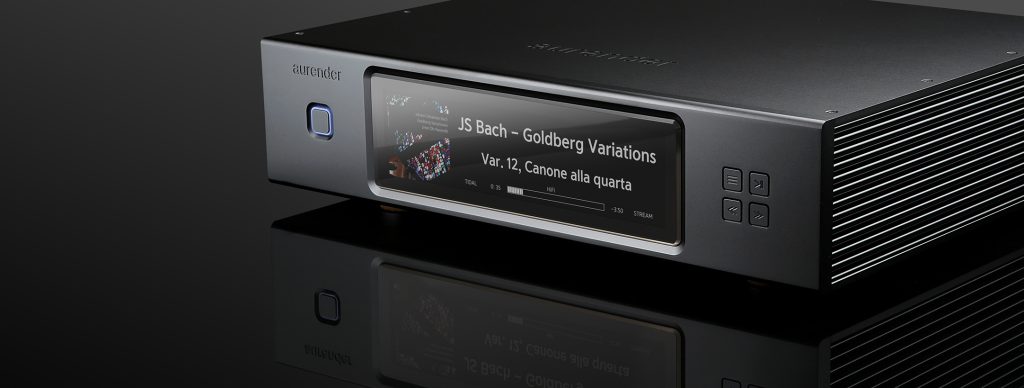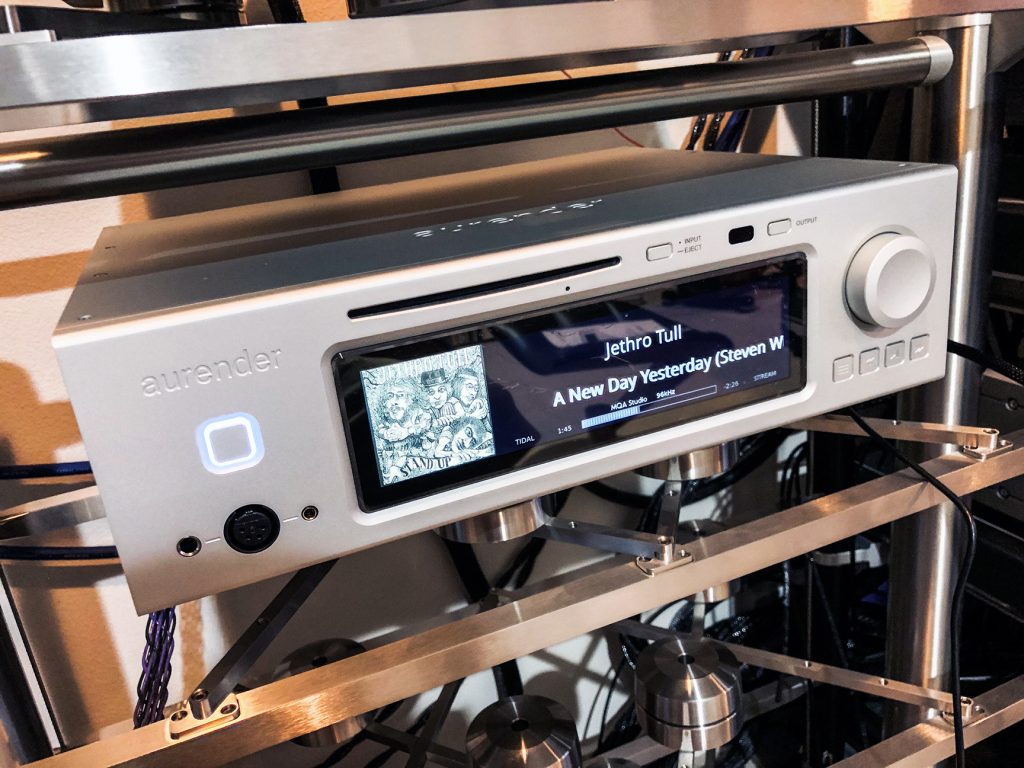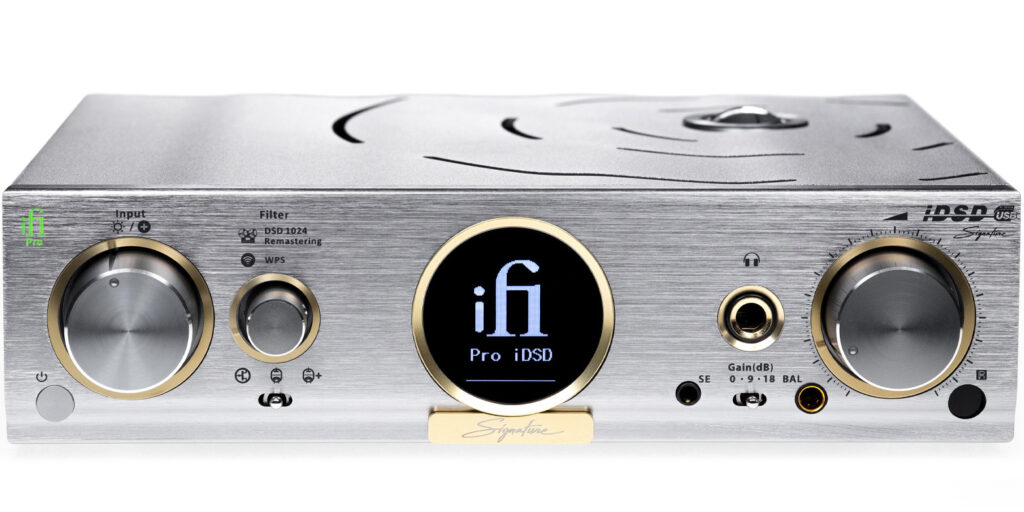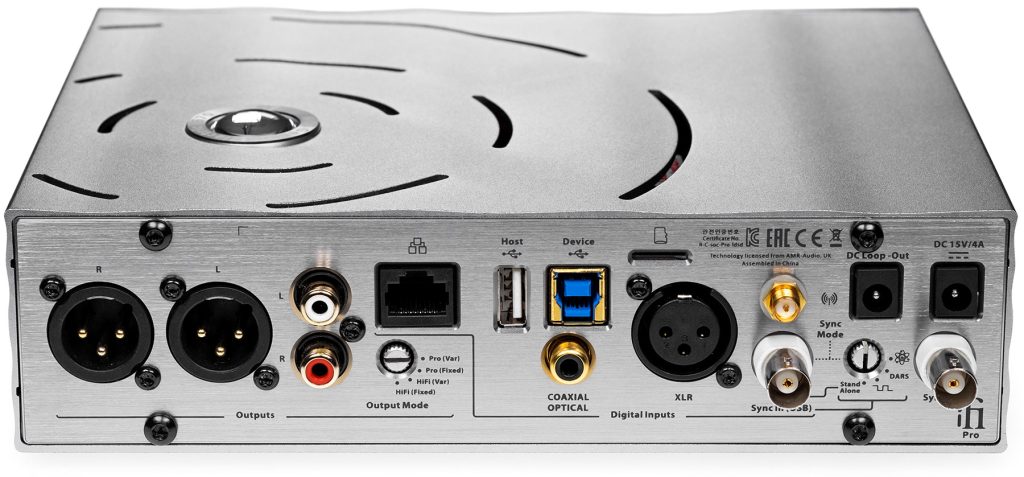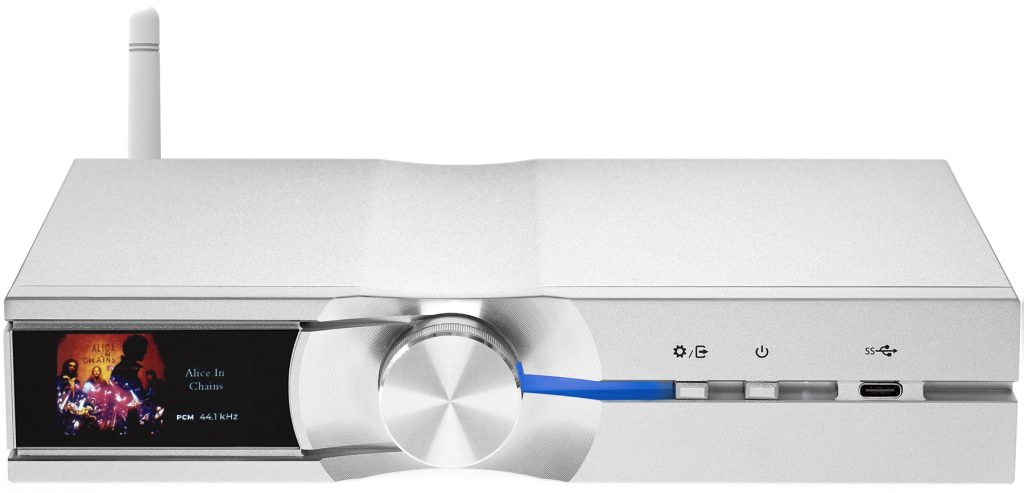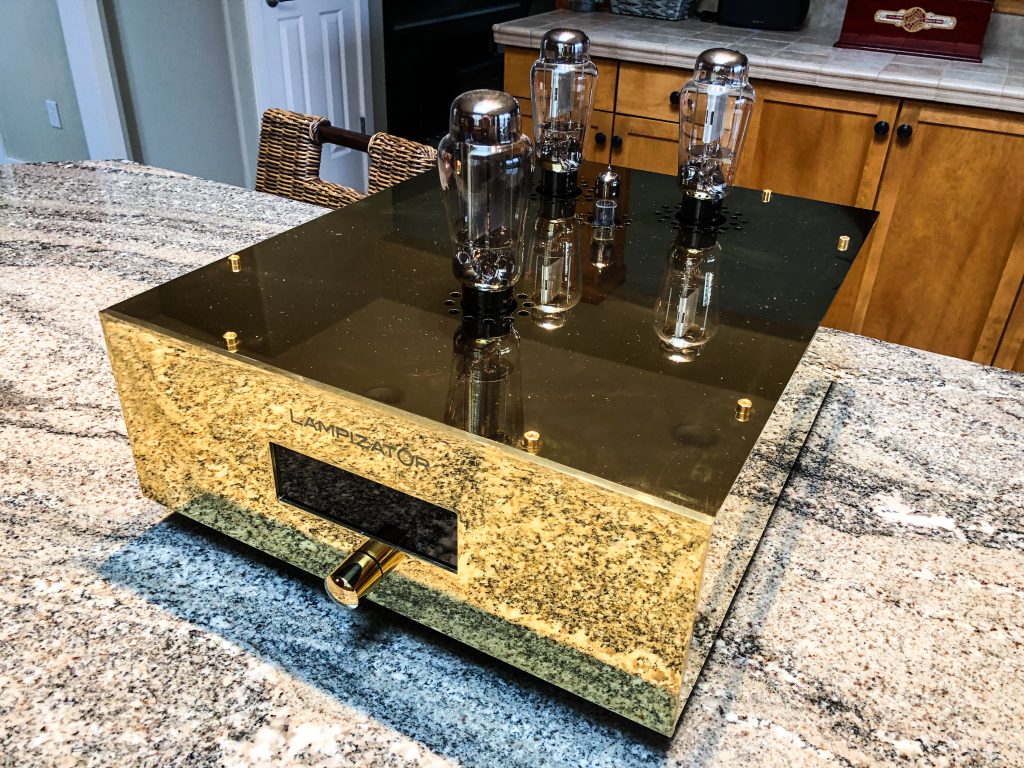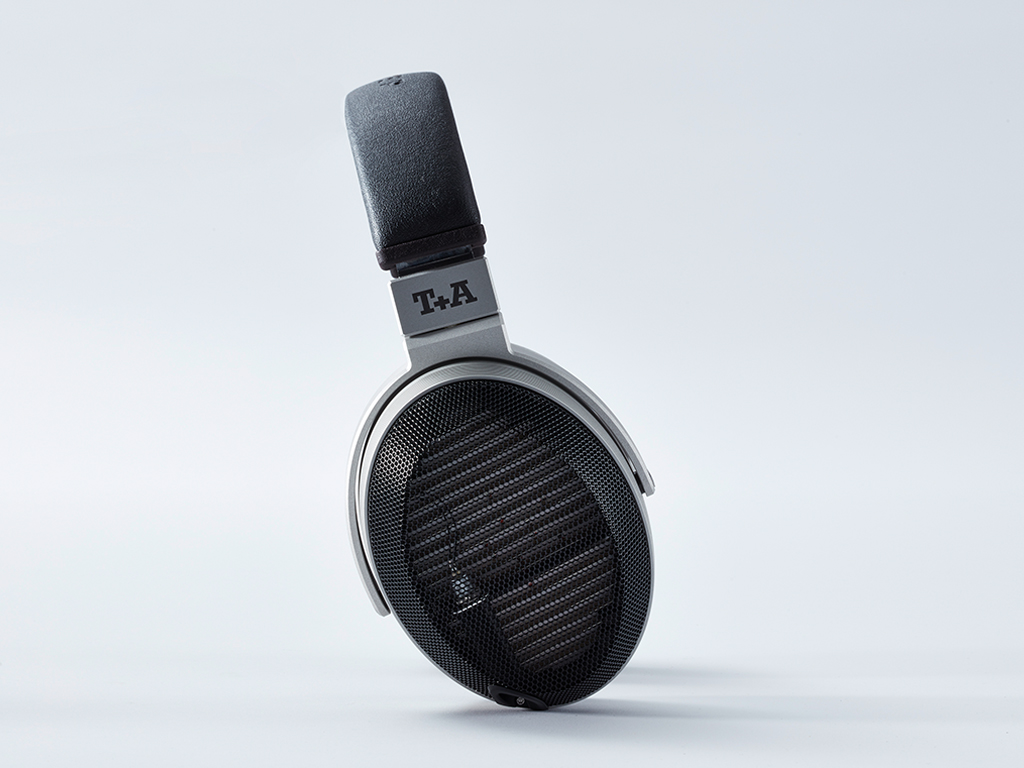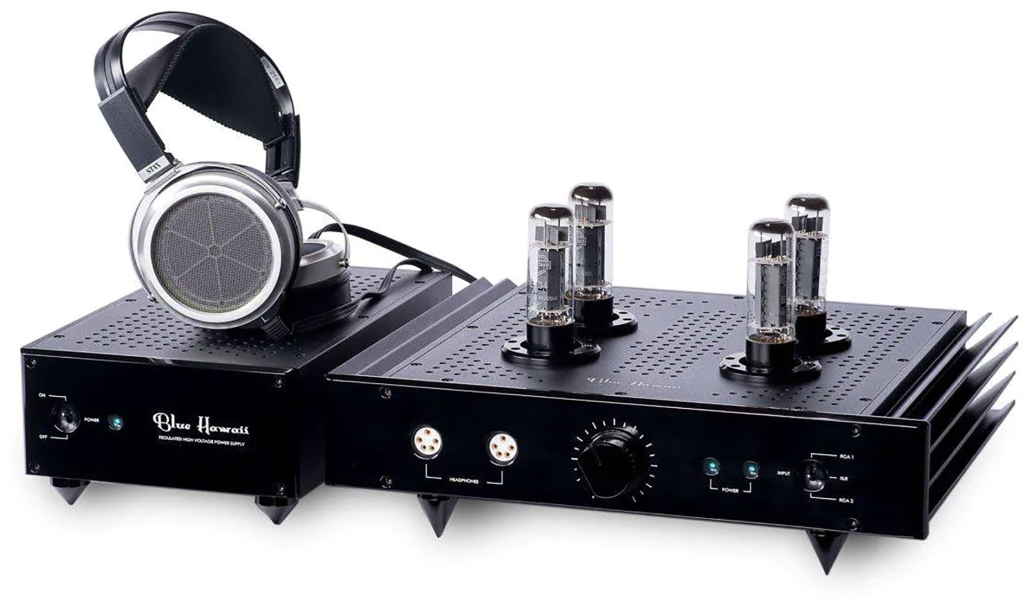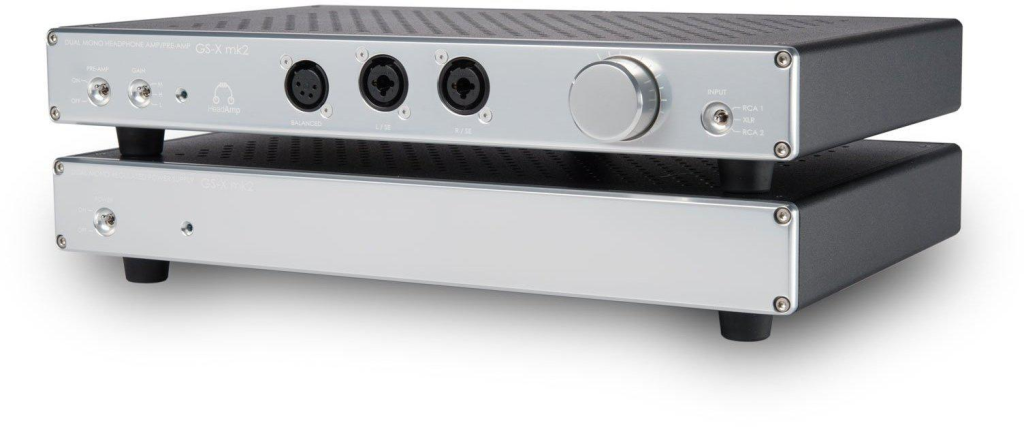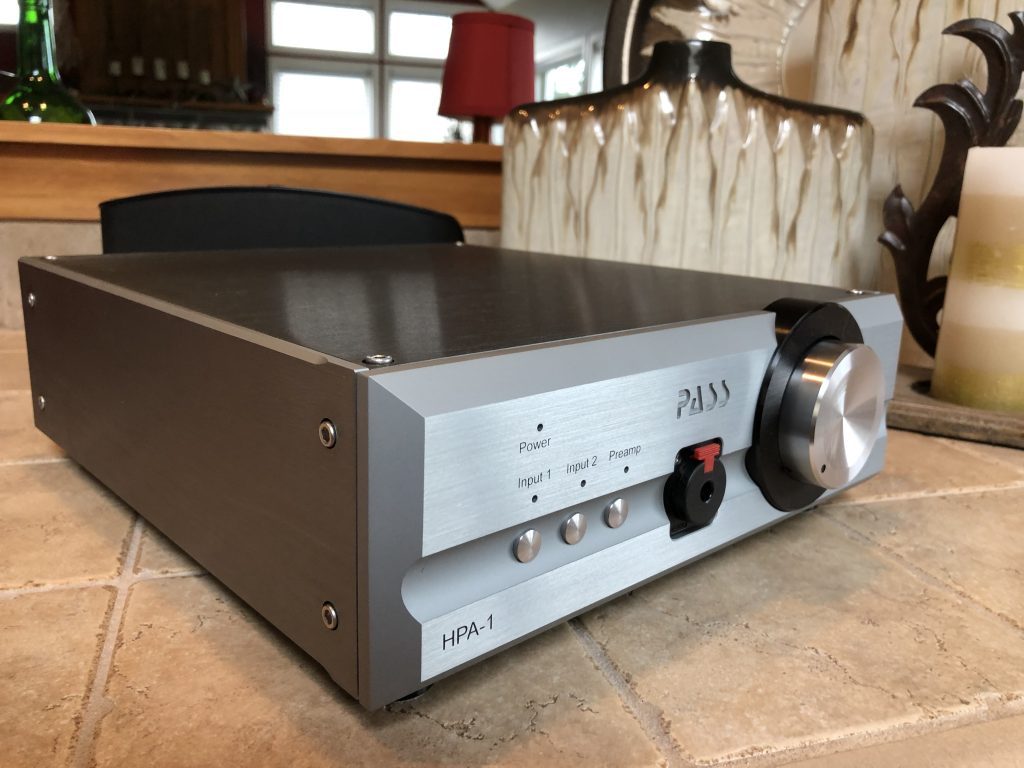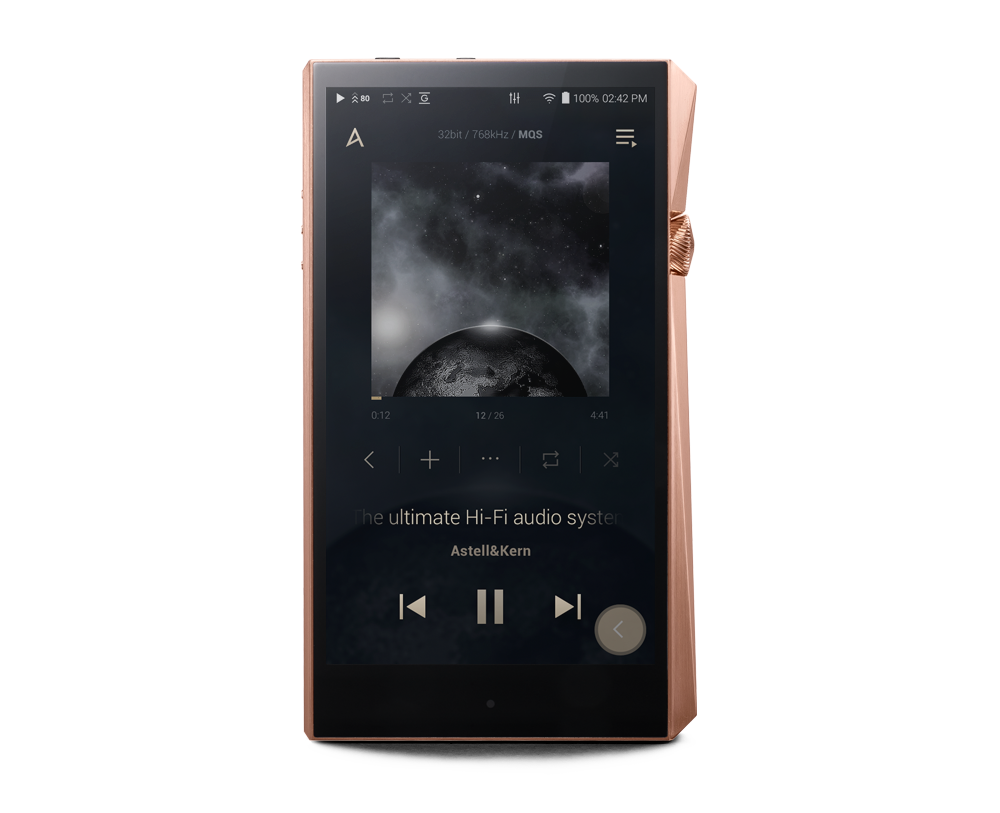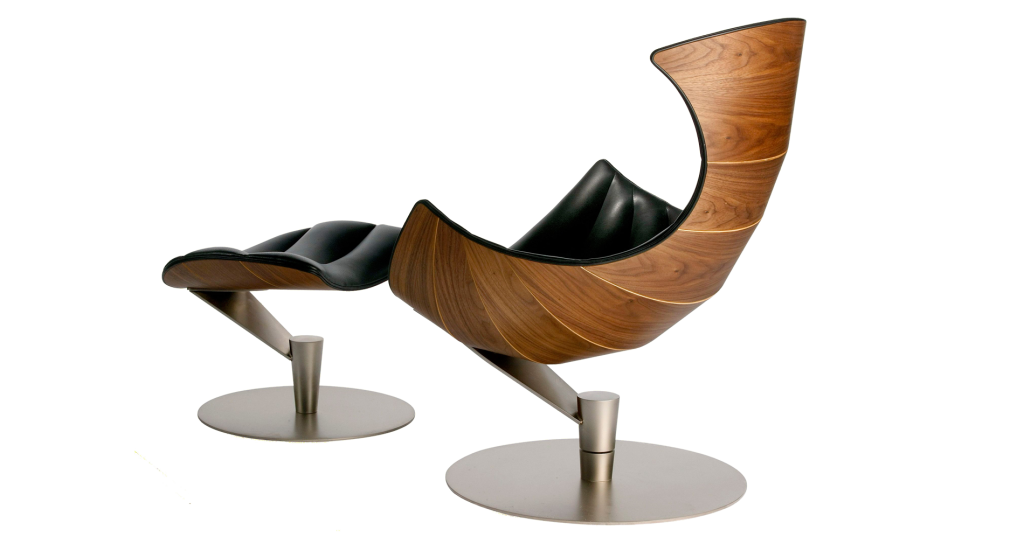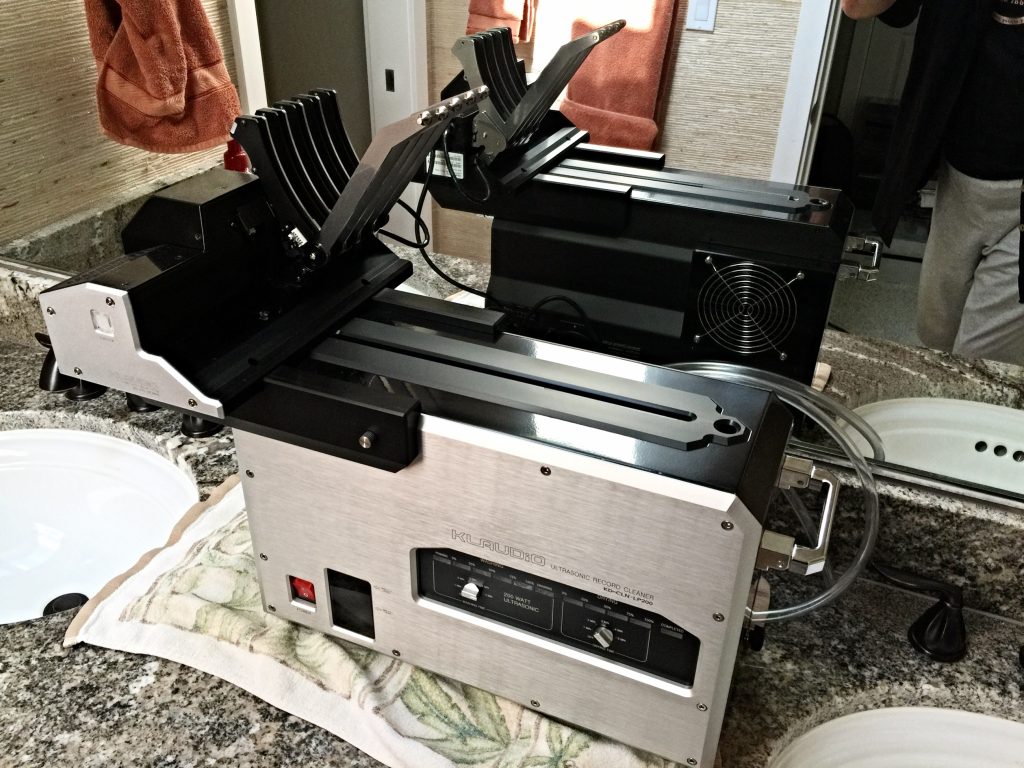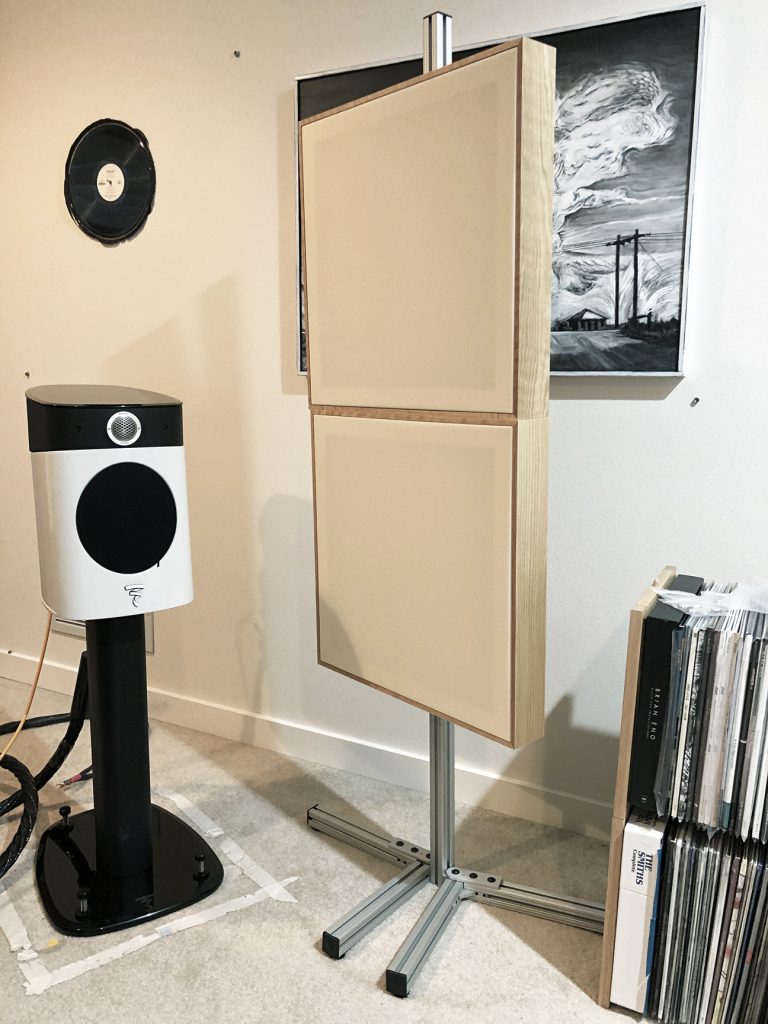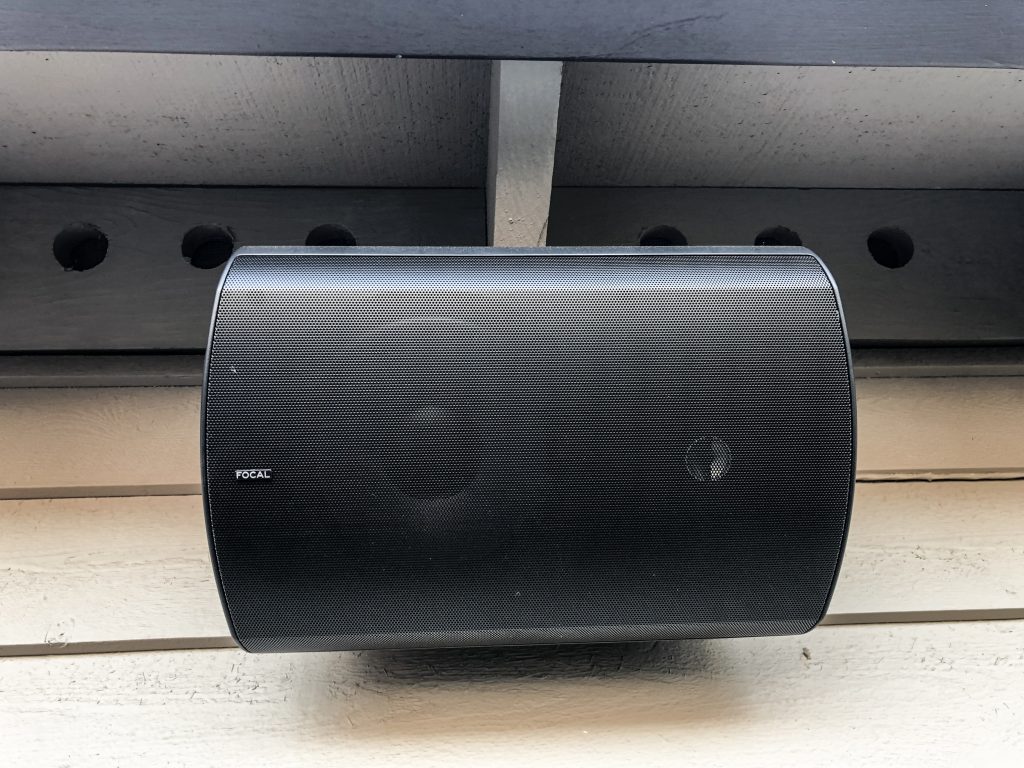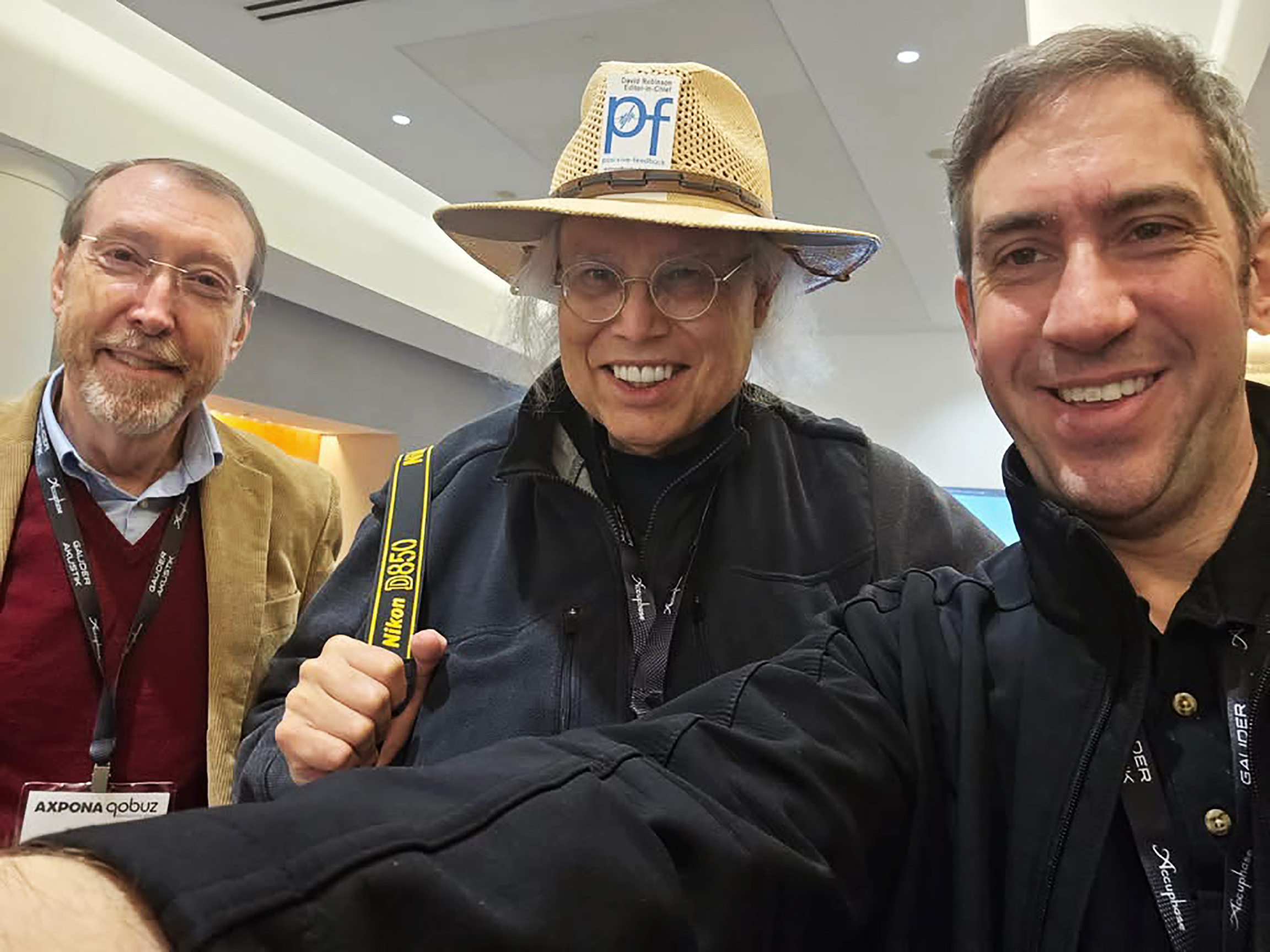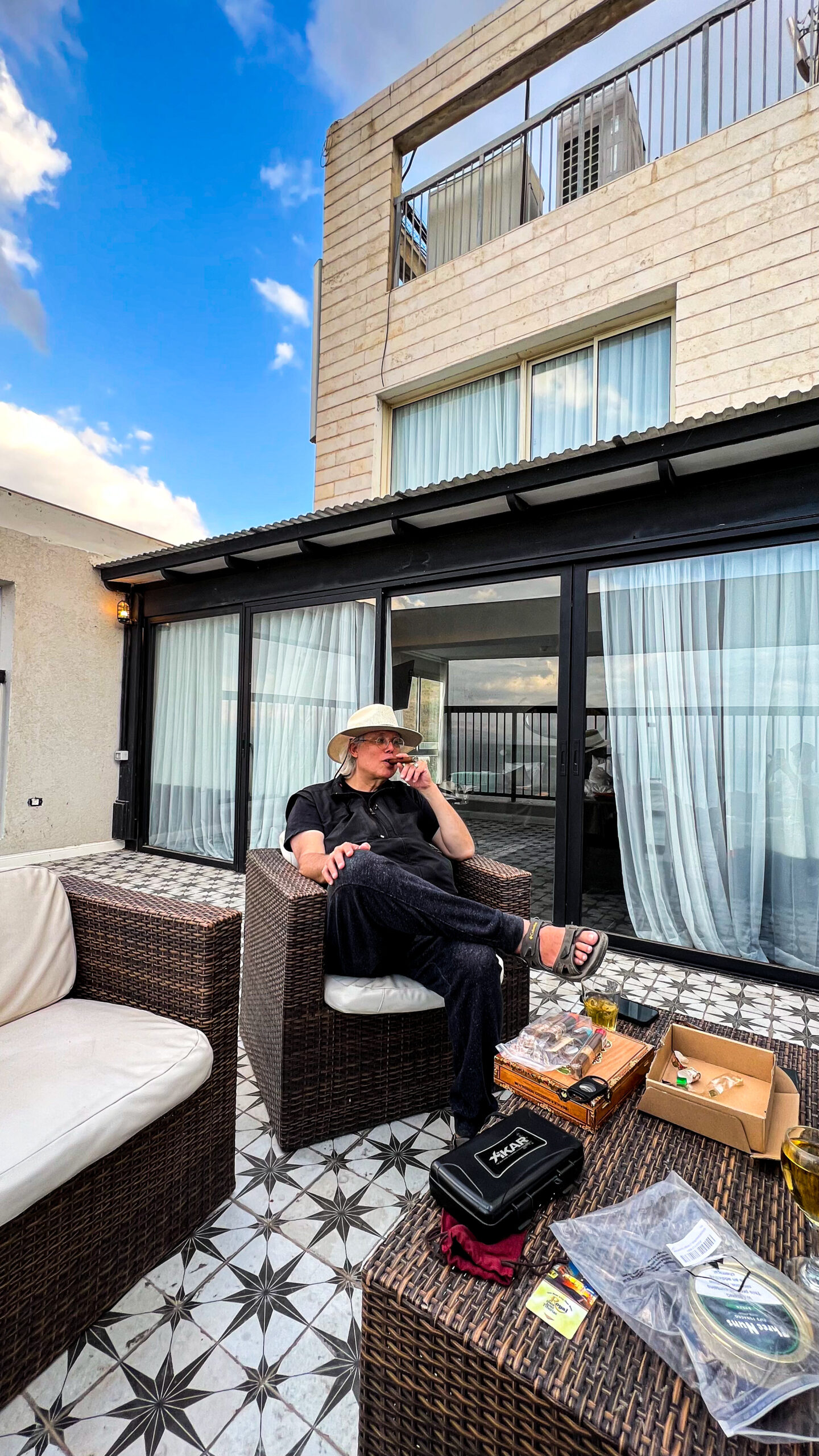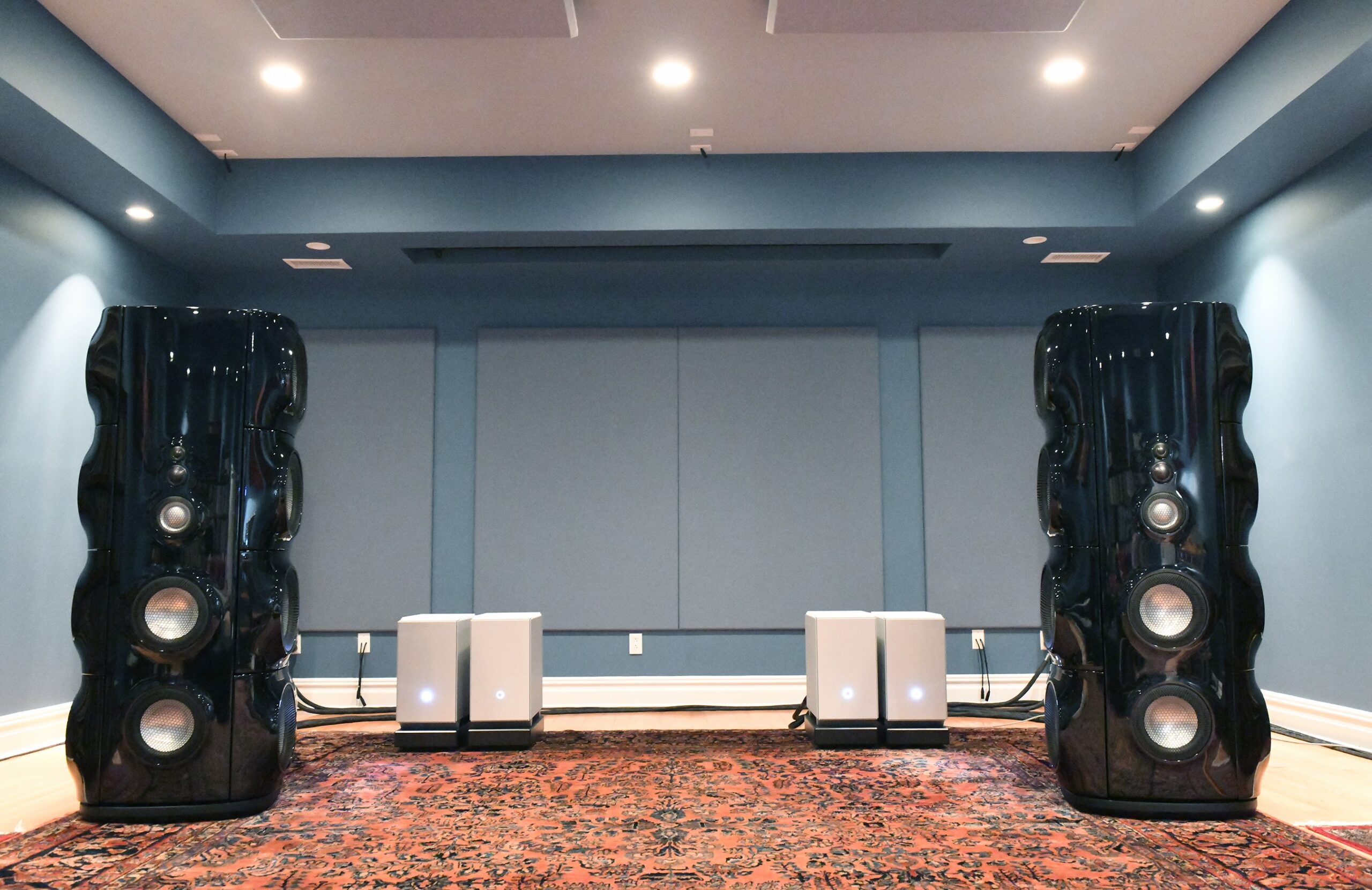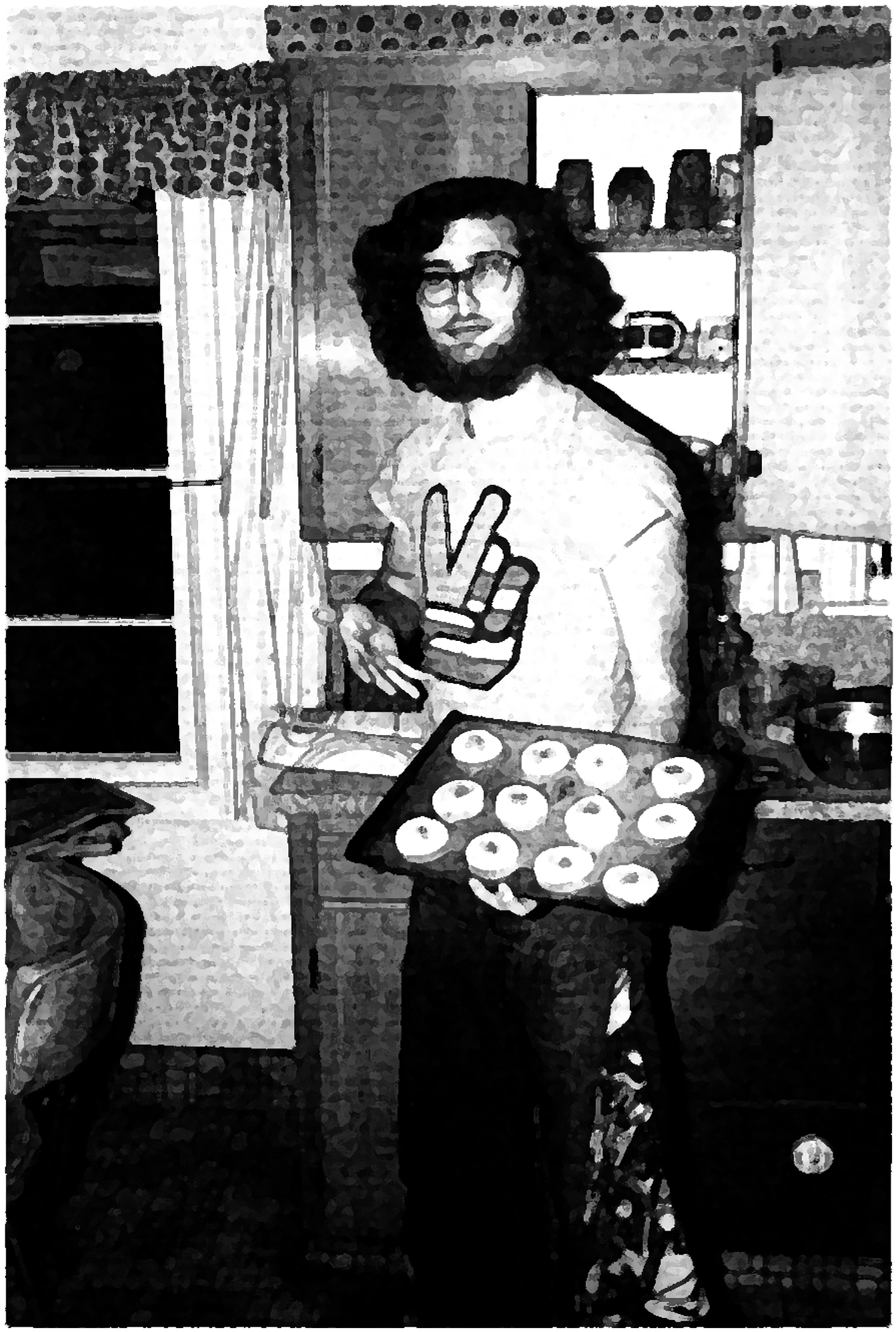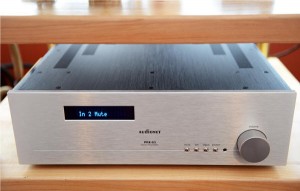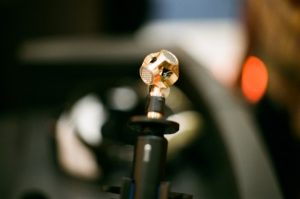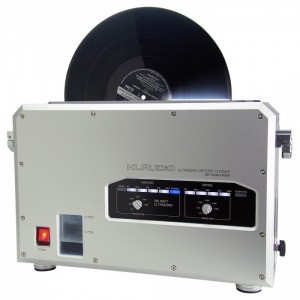Herewith is Impressions: Robinson's Brutus Awards for 2016, Part The Fourth. Part The First can be found HERE, Part The Second HERE, and Part The Third HERE.
This final installment of my Brutus Awards for hardware in 2016 (there will be a very last installment dealing with labels and music companies) concludes with cables, accessories, and system enhancements. In the interests of time, this section will be only lightly annotated, as appropriate. The entries are in no particular order, as usual…
Cables
Kubala Sosna Elation! Ethernet Cable
Howard Sosna and Joe Kubala of Kubala-Sosna Cables: A Portrait in New Jersey, 2016
This year I was finally able to get a complete two-cable Ethernet chain of Kubala-Sosna's Elation! Ethernet that I first encountered at THE Show Newport Beach back in 2015. Joe Kubala kindly sent me two lengths of their reference audio Ethernet cable, so that I could run from our notebook Media Center 21 server to our Dell 2808 Managed Switch with QoS, and from there to either the Merging Technologies NADAC MC-8, or the Playback Designs Syrah Music Server.
KAPOW! Big difference over generic cables, for sure! Much more transparency, no glare, no hash or harshness, and (especially) no muddiness. That last is common with generic CAT 6 cables when used in fine audio. There is no way on God's green Earth that I could go back to plain old generic Ethernet cables for computer-based high-end audio, that's for sure.
These are not cheap (check with Kubala-Sosna for pricing for your custom length(s)), but if you can stand the investment, I can tell you that these are stratospherically good.
Recommended most highly, and definitely a Brutus Award winner.
Purist Audio Dominus AC Power Cable (20A version)
Jim Aud's Dominus 20A AC Reference Power Cable was a key player during my evaluation of the terrific TIDAL Audio reference system in the first quarter of this year. (See my review here.)
As it turned out, the TIDAL Audio Impulse Reference Monoblocs are designed for, and require, a 20A cable and connector. Since all of four of our dedicated circuits in our listening room are wired for 20A service, this wasn't a problem, but we didn't have a 20A power cable. For a brief while we tried a short 15A-20A adapter cable to take things from 15A to the 20A connector, but that wasn't really the best way to go; the adapter subtracted from the quality of the sound by sounding a bit constricted and less dynamic than I was used to.
Jim Aud of Purist Audio at the PF Hospitality Room at THE Show Newport Beach, 2014, listening to Quad DSD recordings
Jim Aud to the rescue! A quick call to Purist Audio at Doug White's suggestion led to Jim getting us a pair of his Dominus Power Cables terminated for the 20A service. Once in place, the Dominus justified its name by clarifying the sound of the Impulse amps at once, removing the sense of constriction and the lack of dynamics, and then improving slowly over the next several weeks. The Dominus solution brought a definite step forward in the sound of the TIDAL System. The sound became more harmonically integrated, organic in feel, and somewhat less grainy. (In all fairness, I would never use a power cord adapter in any serious evaluation project. The result here confirms my preference.)
The Dominus allowed our review project to reach a very happy conclusion.
Many thanks to Jim Aud and Purist Audio for providing a superior 20A power cable in his Dominus. There's no doubt that it deserves a Brutus Award, as proven by the TIDAL Audio system's response to its presence!
Double Helix Cables Prion4 Reference Headphone Cable
Readers who have been following my comments about headphones know that I've been greatly impressed by Peter Bradstock's extraordinary work with headphone cables and adapters. His Complement3 cable transformed the Audeze LCD-3's for me. And now his latest-generation statement design, the Prion4, has been the go-to for my evaluation of the Audeze LCD-4, and brought out all of the glory of that exceptional product.
Incredibly detailed. Atmospheric. Transparency in spades. No sense of grain or of any constriction. And bloody quick!
No, amigos, if you love your reference-grade headphones, then link 'em right!
The Double Helix Cables are my current reference standard for headphones, for sure. A Brutus Award for Peter and company!
Dynamic Design SW16 Neutron Power Cord with active shielding
I have been using the Dynamic Design SW16 Neutron Power Cord and its battery-powered active shielding in our desktop reference system in a very particular place: powering our SACD players in this space. I've used it with both our Teac Esoteric DV-60 player, and with our Audionet VIP G3 reference SACD player. Each has its own sonic signature, with the DV-60 being a bit more elegant and laid-back, while the VIP G3 is more detailed, dynamic, and more transparent.
In each case, the DD cable brought more detail, texture, and a greater sense of dynamics. Dynamic Design points out that this cable is especially suited for digital components, which is where I have used it exclusively. The active power unit, which is switchable to preserve battery life, does seem to improve the sound when on…I wouldn't recommend the use of this cable in its inactive mode.
A collection of truly brilliant guys from THE Show Newport Beach 2016: Left to right, Bill Artope of Dynamic Design, Fred Anisley of LampizatOr North America, Doug White of The Voice That Is, and Olu Sonuga of Dynamic Design.
After listening for months on two different SACD players, I've come to the conclusion that the SW16 Neutron is a very fine cable for high-resolution digital products, and have given it a Brutus Award for that application explicitly. If you are unsatisfied with the results of your digital playback, especially if it's a bit tubby, veiled, or lacking resolution, and have an expensive enough digital component to warrant investing in the DD SW16 Neutron…it isn't cheap, so check their Website for the latest pricing…then you'll definitely want to consider the SW16 Neutron active shielding power cable.
Accessories and System Enhancements
Critical Mass Systems QXK Rack with Black Diamond, Black Platinum, and Black Sapphire Shelves; and the Black Diamond Amp Stand with MXK Feet
Joe Lavrencik of Critical Mass Systems, in the PF listening room with his QXK Rack System
Later in the PF editorial year…October, in this case…I was treated to the return of an old audio friend, Joe Lavrencik of Critical Mass Systems. He and his wife, Joy, flew in to setup one of his QXK Rack Systems, plus a pair of his Black Diamond MXK Amp Stands.
I've had the CMS racks in on several occasions over the years, with tubed, hybrid, and solid-state designs being evaluated. In every case, the results have always been spectacular, and CMS has seen Audio Oasis! and Brutus Awards from me more than once. So when Joe suggested that we give his latest designs a go, I was quite willing to do so. I had just enough room to fit one of his racks in place, provided that he hit my requisite width. He did so very nicely.
Joy and Joe Lavrencik, with the assembled Critical Mass Systems QXK Rack in place.
Joe is always at pains to point out that the CMS systems are not isolation racks; instead, they are filtering systems. They don't seek to prevent vibration, but rather they control it through sophisticated filtering. (For details, visit the Critical Mass Systems Web site.)
The configuration that Joe brought with him consisted of the following layout:
The top level of the QXK rack has the Black Diamond shelf. The next 2 levels down are Black Platinum shelves; the lowest level is the Black Sapphire shelf. We placed the Playback Designs Merlot Quad DSD DAC and OpBox-equipped BDP-103 optical player on the top shelf; the Playback Designs Pinot Quad DSD ADC and Syrah Music Server on the second shelf; the BAT VK-53SE preamp on the third shelf; and the PS Audio P10 Power Supply on the bottom shelf.
The CMS Black Diamond Amp Stand was placed between the GamuT Audio Zodiac Reference Loudspeakers, with the BAT VK-255 stereo amplifier upon it.
Joy and Joe Lavrencik with the Black Diamond Amp Stand and MXK Feet.
The results have been powerfully satisfying thus far: Exceptional transparency with its related clarity, excellent details, and dynamics without smearing, plus harmonic integrity and (especially noticeable with the brilliant Zodiac loudspeakers) an incredibly organic presentation of the music. This is a smashing great result! I won't be making any changes in this setup for the foreseeable future.
As to prices: "It's complicated," as they say about relationships on Facebook. For custom pricing or a quote, go to the CMS site for information, including contact into. The QXK rack is the framework; it retails for $1995 per component level. The Black Diamond filters on top of the QXK rack as well as Black Diamond amp stands retail for $2895 per component. The Black Platinum filters retail for $1895 per component. The Black Sapphire filter retails for $995 per component. The Black Diamond filter with MXK spikes are $3090.
All of this makes me wonder what the CMS ultimate reference rack, the MAXXUM can do.
Meanwhile, here's a set of well-deserved Brutus Awards for each component in this CMS configuration! Certainly both our Playback Designs and BAT components are appreciating the difference that CMS makes.
Daedalus Audio DiD Isolation Devices
Lou Hinkley of Daedalus Audio is another audio designer who is no stranger to my awards over the years. He's certainly picked up a few of my Audio Oasis! Awards, usually in tandem with Dan Wright of ModWright and Alex Sventitsky of WyWires…the Three Musketeers! His crafted loudspeakers are masterful examples of woodcrafting, and synergize with Dan's and Alex's work so well that there's no denying the superb results, year in and year out.
This time around, however, we're dealing with an accessory that Lou developed: The Daedalus isolation Device, or DiD. This is an isolation foot that combines metal, wood, and bearings to achieve a kind of floating elegance in any component that rests upon it. As Lou says it on his Daedalus Audio Web site, "Resonance control is crucial in the design of great speaker systems, and now we have applied that knowledge to isolation devices (footers) for components. These devices [the DiDs] utilize dissimilar materials to dissipate resonance coupled with bearings to also isolate the electronic component from vibration. Precision made of highly polished billet Aluminum, solid Cherry and Brass with steel bearings."
Lou Hinkley of Daedalus Audio at THE Show 2016: A Portrait
Lou sent a set of the DiDs to me early on, and I placed the set under a very sensitive component: our Aurender W-20 Reference Music Server. If I was going to hear a difference that the DiDs might make, this would be the place.
The results were killer! The sound from our DSD library there to the Playback Designs IPS-3 Integrated Amplifier with Quad DSD DAC (itself already on a Walker Audio Prologue Isolation Platform with Valid Points Isolation Feet) was improved. The main thing that I noticed was much better transparency, as if that unit, previously on a carpet in this setting, had been in an acoustical goo, but was now was clean and clear. As I said to Lou in an email at that time, "I'm impressed. Your DiD's are imparting a clarity, transparency, and liquidity, that is luscious, my friend. No major review is required here. These are the real thing! And very easy to use."
Exactly.
And the DiDs are still under the W-20.
I won't be doing a major review of the DiDs, as I said above…this is it…but the DiDs are very worthy of a Brutus Award here in 2016.
Furutech Demaga LP/Disc demagnetizer
The Furutech Demaga LP, Disc and Cable Demagnetizer
This year I received a sample of the new Furutech Demaga LP/Disc Demagnetizer from the good folks there. It's an update of the classic Demag that I've praised in the past, providing a powerful degaussing effect to all types of LPs, optical media of various formats, and even cables, interconnects, and power cords. Plants, hamsters, small cats and dogs, and your credit cards can also be demagged, but I don't recommend it.
The design is very much like the old Demag…and quite hefty, at nearly 25 pounds…but the color has now shifted to a handsome black carbon fiber effect with very clear blue (power on) and green (demagnetization in operation) light under a protective screen. Furutech claims a 20% increase in the magnetic field produced, with a likewise greater effect upon LPs, discs, and cables. My measurements indicate that the degaussing field is indeed quite powerful; as a matter of fact, I would keep magnetically sensitive devices away from the Demaga while it's in operation.
Demagnetizing LPs? What gives?! It's just vinyl, right?
Well, as Furutech notes on their Website, "The fact is that pigment added to the plastic during the manufacturing process is the culprit. The minute amount of ferrous material in the pigment causes LPs to become magnetized. Testing at the Tokyo Nanotechnology center with a IHI Gauss meter showed that after an LP was treated with the deMag the magnetic field of the LP was lowered from 620~630 nT to 572~582 nT." In other words, a measurable reduction in the Gaussian field of the LP. And these results were with the older Demag; I would expect better field reduction from the Demaga. Certainly I can hear the improvement quite clearly.
I always loved the ameliorating effect that the Demag had upon my LPs in particular, and the new model is even more effective. The Demaga will take out a layer of hash and noise that…like a lot of relationships…you don't realize or appreciate what you have until they're gone. The result is a cleaner, more transparent reproduction of the signal encoded in your grooves. Do you want this? Absolutely, amigos! And the better your turntable/tonearm/cartridge, the more you need this.
The ergonomics in the Demaga have been improved, with the activation switch now being flush and underneath the handsome screen to the right in the photograph above. The Demag had a push button that was vulnerable due to the fact that it stuck up noticeably. Now the power switch is a soft-touch spot on the Demaga. The power cable plugs in underneath…no bulky cables need apply for that connection…and the master power switch is now directly under the control panel. (You see it as the red switch edge under the leading edge of the unit in the photograph above.)
This is a real improvement over the older Demag design, and as such is very highly recommended by me. Sine qua non for LP lovers who want to try to get everything out of their records, and a Brutus Award winner for 2016!
Furutech GTX-D NCF AC Receptacle
Furutech also scored at PF home base this year with their NCF (Nano Crystal Formula) technology, applied to that pesky power portal in our listening rooms: the AC receptacle.
I was approached by Scot Markwell who distributes Furutech to check out the new GTX-D NCF AC receptacle. I was willing to do so, knowing that fellow PF'er Scott Robertson had been impressed with NCF technology at his listening room…so had I when I visited him and listened. Two of the GTX-D NCF AC receptacles arrived not too long thereafter, but then had to wait for a time when we could power down our desktop reference system room (which also controls all networking for our location), and have an experienced installer work with me to do the work.
Thanks to my son, John Robinson! Salute, meu filho!
Furutech has taken a radical approach to the question of constructing AC outlets that are as no-compromise as possible. As they put it on the product page on their Web site, "Incorporated into select Furutech products, Nano Crystal² Formula—NCF—is comprised of a special crystalline material that has two 'active' properties. First, it generates negative ions that eliminate static and secondly, it converts thermal energy into far-infrared. Furutech then combines this remarkable crystalline material with nano-sized ceramic particles and carbon powder for their additional 'Piezo Effect' damping properties."
The rationale for their design is openly stated, and bears quotation: "Of course everyone would love to make pure-copper receptacles, but its malleability—lack of stiffness—makes pure copper a poor choice. That's why you'll find less conductive metals like beryllium copper, phosphor bronze or brass in most receptacles. Furutech's intense engineering scrutiny has resulted in an industry-first, a technique allowing us to use special Furutech rhodium-plated α (Alpha) pure copper conductors strengthened and sprung by our innovative nonmagnetic Stainless Steel Conductor Spring System that keeps a firm grip yet won't damage male connector blades or their plated surfaces. But what really sets the GTX-D NCF receptacle apart is 'NCF'—Furutech's ultimate damping material—Nano Crystal² Formula eliminates static, 'interconverts' thermal, mechanical and electrical energy and damps vibrations."
These comments intrigued me. Upon installation, I commenced listening intensely, in the nearfield, to the new AC receptacles.
The results were better than I expected, frankly. Even with a Furutech Daytona 303 Power Line Conditioner and Distributor in the room for many of our components, the sound became more transparent, and seemed to have less hash in the playback. Since this is a highly resolving desktop reference room, with excellent components in it (Pass Labs INT-250 Integrated Amplifier, Evolution Acoustics MMMicro One Loudspeakers mounted on Wave Kinetics Isolation Feet for nearfield listening, Audionet VIP G3 SACD player with Audionet EPX Power Supply, Aurender W-20 Music Server, exaSound Playpoint Network Audio Player, exaSound e32 Quad DSD DAC, eXemplar audio eXception Reference Headphone Amp, Audeze LCD-4 Headphones, JPS Labs Abyss 1266 Headphones, Furutech Daytona 303 Power and Line Conditioner, and cables by Kubala-Sosna, Skogrand, Double Helix Cables, and Dynamic Design), there was no gainsaying the audio outcome. And this was regardless of audio format: Both 44.1kHz PCM streamed via Roon/Tidal HiFi to the exaSound Playpoint/e32 combination, and DSD all the way out to Quad all benefitted. In fact, the higher the resolution, the more noticeable the improvement.
Certainly the removal of generic AC outlets, and their replacement with the Furutech GTX-D NCF receptacles, has brought a welcome clarity to my nearfield listening experience…which, since I am an editor and writer, spending many hours a day in this setting, is an enormous blessing to me.
At about $260 per receptacle, the Furutech's aren't your usual Home Depot fare, but I can assure you that they will advance noticeably the quality of the sound in any audio (or video) room that you install them in. In audiophile price terms, they're a real bargain; pitch the generic AC and see what you're missing!
Another Brutus Award for Furutech here in 2016, and gladly!
Oyaide Audio Nijinko R0 Beryllium Signature Model, Non-Plating Edition AC Receptacle
(Image courtesy of soundhouse.co.jp)
I have another winner in the category of AC receptacles, this time from Oyaide. Joe Cohen sent this to me quite a while back, but it had to wait until I could arrange for an experienced electrical installer, and a time when I could down the whole room for the installation. Unfortunately, that took a lot longer than I expected, since I had set the unit aside, and it got buried under other items.
Yep. That happens sometimes.
Anyway, the Nijinko R0 Beryllium Signature Model is now in place. This AC receptacle is noteworthy for the fact that it has bare "twice-polished" beryllium copper, which Oyaide characterizes as "naked." They spend quite a bit of time talking about the materials, components, and processes used to produce the Nijinko; check the Oyaide Website for details.
My comments about this model from Oyaide are somewhat similar to what I noted about the Furutech above, but the context is definitely different. Since I have a high-end workstation and high-resolution video hooked up to the Oyaide receptacle, plus audio items like my Astell & Kern AK-380 in its docking station, I can say that there is a small but definite smoothing in the sound of the 380 when it is online this way. I have a sense that the Oyaide is smooth and elegant in its effect on audio devices…silky, even.
(Image courtesy of audioexcellenceaz.com)
More: My 27" Dell video display seems to have gained a bit of crispness, strangely enough. And I should know, as I work with it very closely on my photographic work, which is very high resolution (36 megapixels and 80 megapixels). I can't explain the improvement; I'm just reporting it.
Based on what I'm hearing, I think that folks with tubes are going to especially appreciate the Oyaide Audio Nijinko R0 Beryllium Signature Model. The smoothness that the AK380 hints at is pretty compelling. Pricing is $147 these days, but check with The Lotus Group for the current number.
Very nice! A (belated) Brutus Award for Oyaide, and apologies to Joe Cohen for this evaluation taking a good bit longer than it should have.




